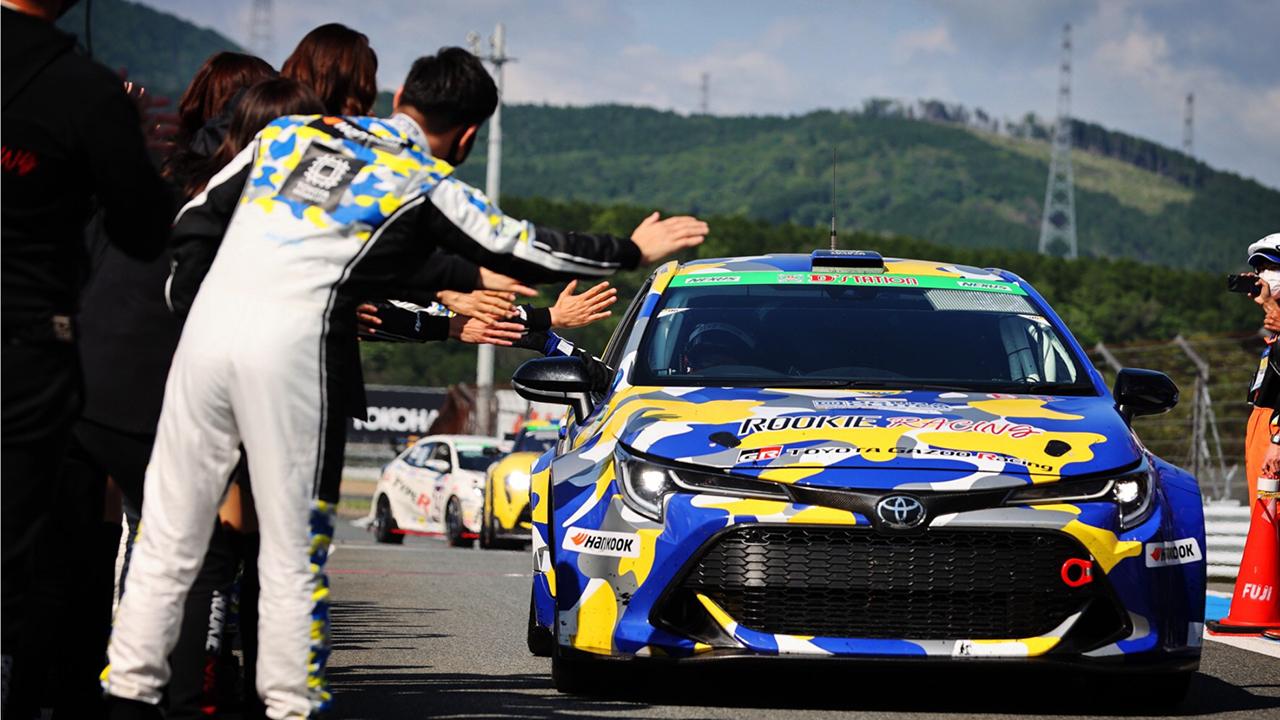
The Corolla with a hydrogen-powered engine completed the 24-hour endurance race in May 2021. Toyota Times looks back on the 24 hours that may become a historic time one day, together with photos by race photographer Noriaki Mitsuhashi.

Over the 24 hours from 3:00 p.m. on May 22, 2021, a racing car equipped with a hydrogen-powered engine completed an endurance race for the first time ever.
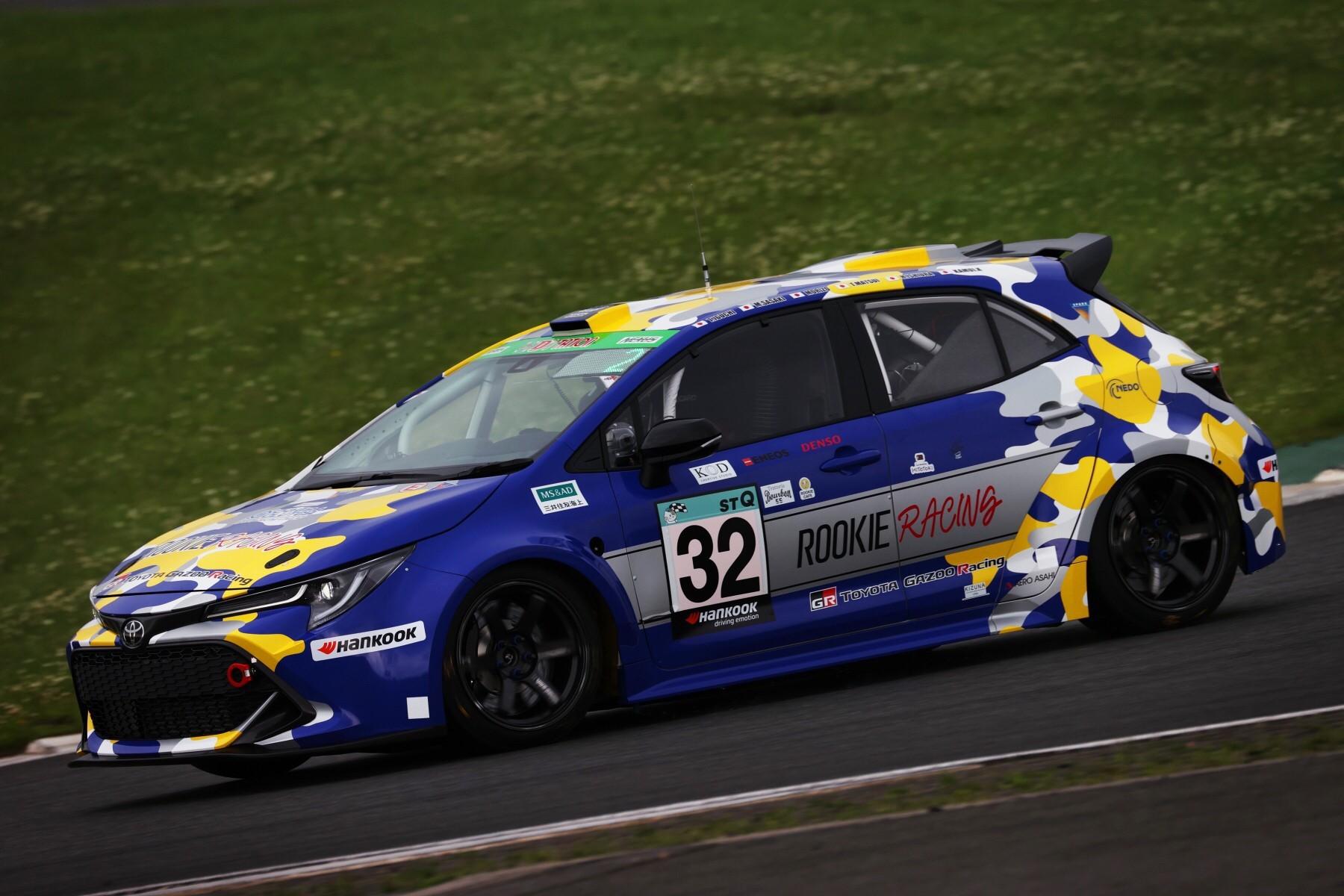
The time that the drivers spent actually racing out on the track was 11 hours and 54 minutes. Of the remaining 12 hours and 6 minutes, some 8 hours were spent conducting repairs and safety checks in the pits, with around 4 hours needed for refueling hydrogen.
The team completed 358 laps around Fuji Speedway, a distance of 1,634km. This was less than half the 763 laps notched up by the car that claimed the overall victory.

While some on social media viewed this result as ‘not even running half the race’, Akio Toyoda shared the following words about completing 24 hours, 358 laps and 1,634km despite facing problems.
These words were given to the Toyota Times video staff during Akio’s drive from the goal point to the pit after completing the race.
Akio:
It’s amazing that we completed the race…this means we ran over 1,500km, right?
We faced many problems, but thanks to everyone’s hard effort, we completed the race with a car almost at a shakedown stage.
I believe there were many findings because we made the car ready in time for this race.
We probably wouldn’t have found which parts could break if we had pursued making all parts perfect and free from getting broken.
Thanks to the findings, we now know what the issues are, and this 24-hour race has become a milestone for us to prepare and go further.
I would like to thank everyone involved in this race. Let’s have a good sleep now.
We decided to challenge this 24-hour race to expand the path toward carbon neutrality. I believe that it is not through regulation or goals, but rather purposeful passion and action that we will create the future.
The 5.5 million colleagues in the automotive industry have watched this purposeful passion and action. I hope that more people will join us in creating the future together. I look forward to working together with these people going forward!
Despite the team spending one-third of the race dealing with problems, Akio views those hours as a valuable asset towards achieving carbon neutrality. If the car had not been ready in time for the race, these efforts would not have even reached the starting line.
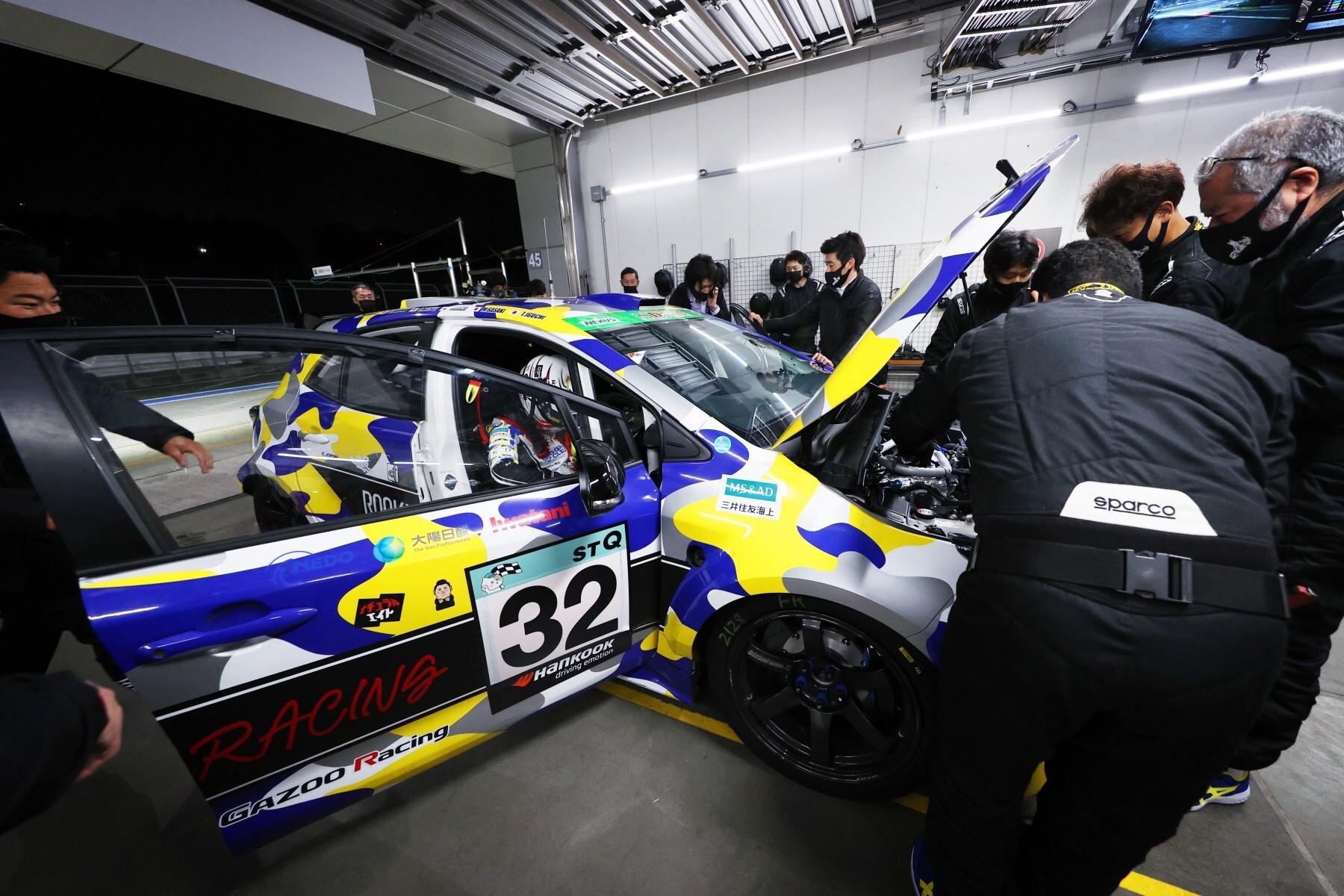
Given that the race marked a big step towards carbon neutrality, we hoped to preserve the event for posterity. To that end, below is a record of all the major events during the race, which were posted on ROOKIE Racing’s Twitter (in Japanese only).
[May 22, 2021]
The honor of starting in the driver’s seat goes to Kamui Kobayashi, a veteran of many 24-hour races around the world who can also be considered the ‘catalyst’ for the car’s entry in this event.
Kamui gets behind the wheel of the hydrogen-powered Corolla lined up on the grid.
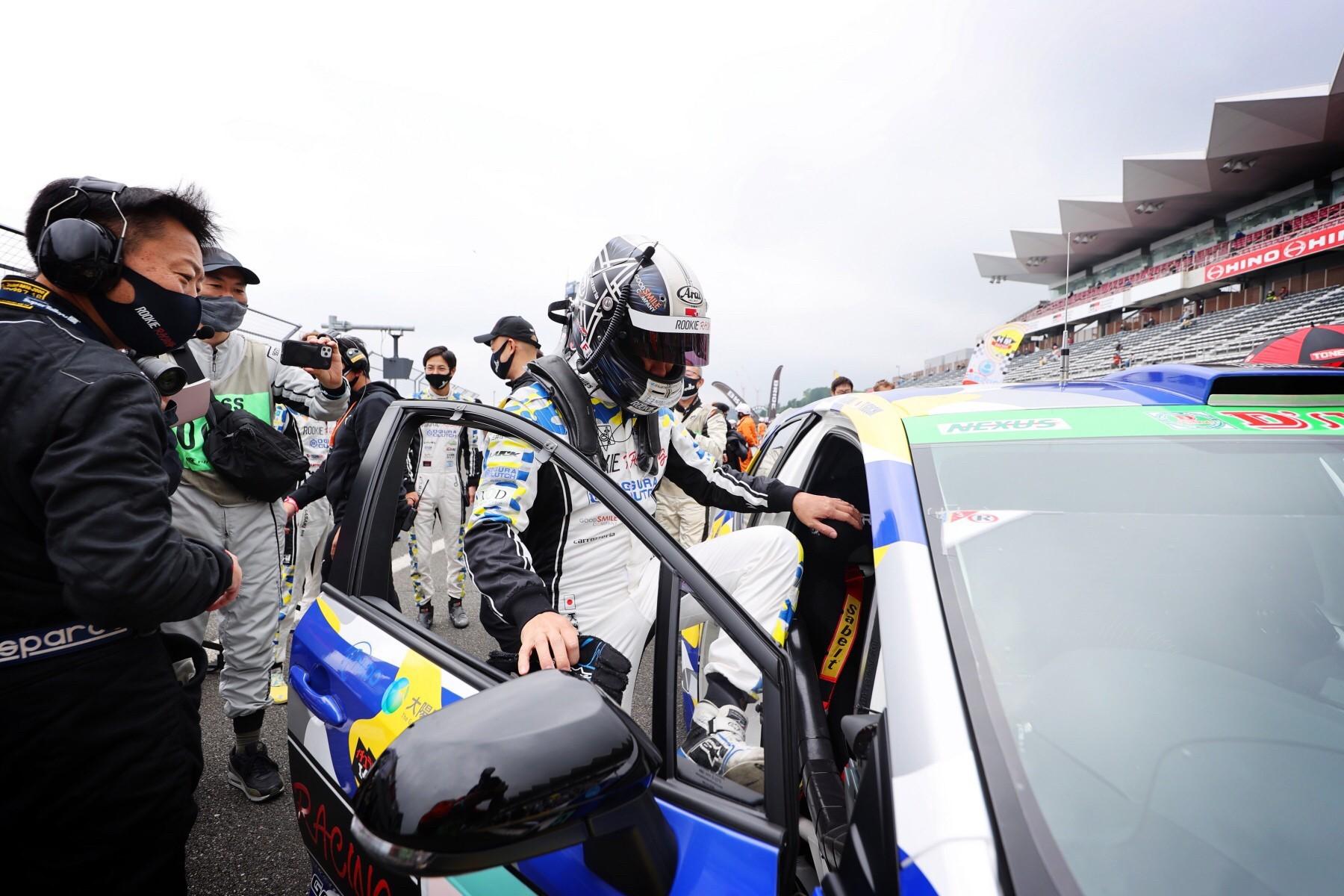
[15:00]
Driven by Kamui Kobayashi, the hydrogen-powered Corolla sets off down the home straight to begin the race.
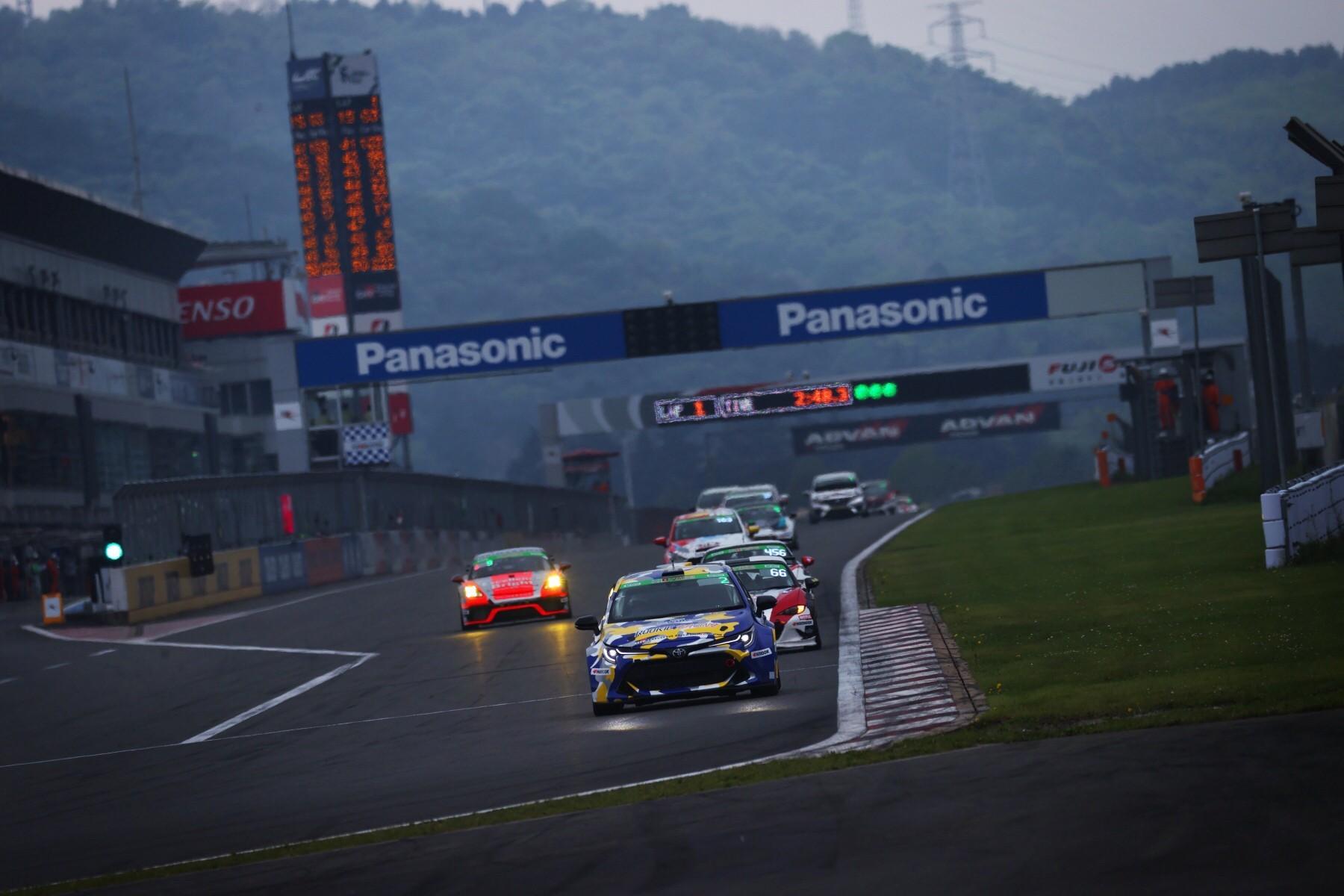
[15:28]
After ten laps the car returns to the pits, heading for the hydrogen refueling area. The drivers had been told to refuel approximately every 30 minutes, so the number of laps is just as expected.

As explained before the race, the first hydrogen refueling is done in two stages, taking about seven minutes. So begins the refueling team’s long battle.
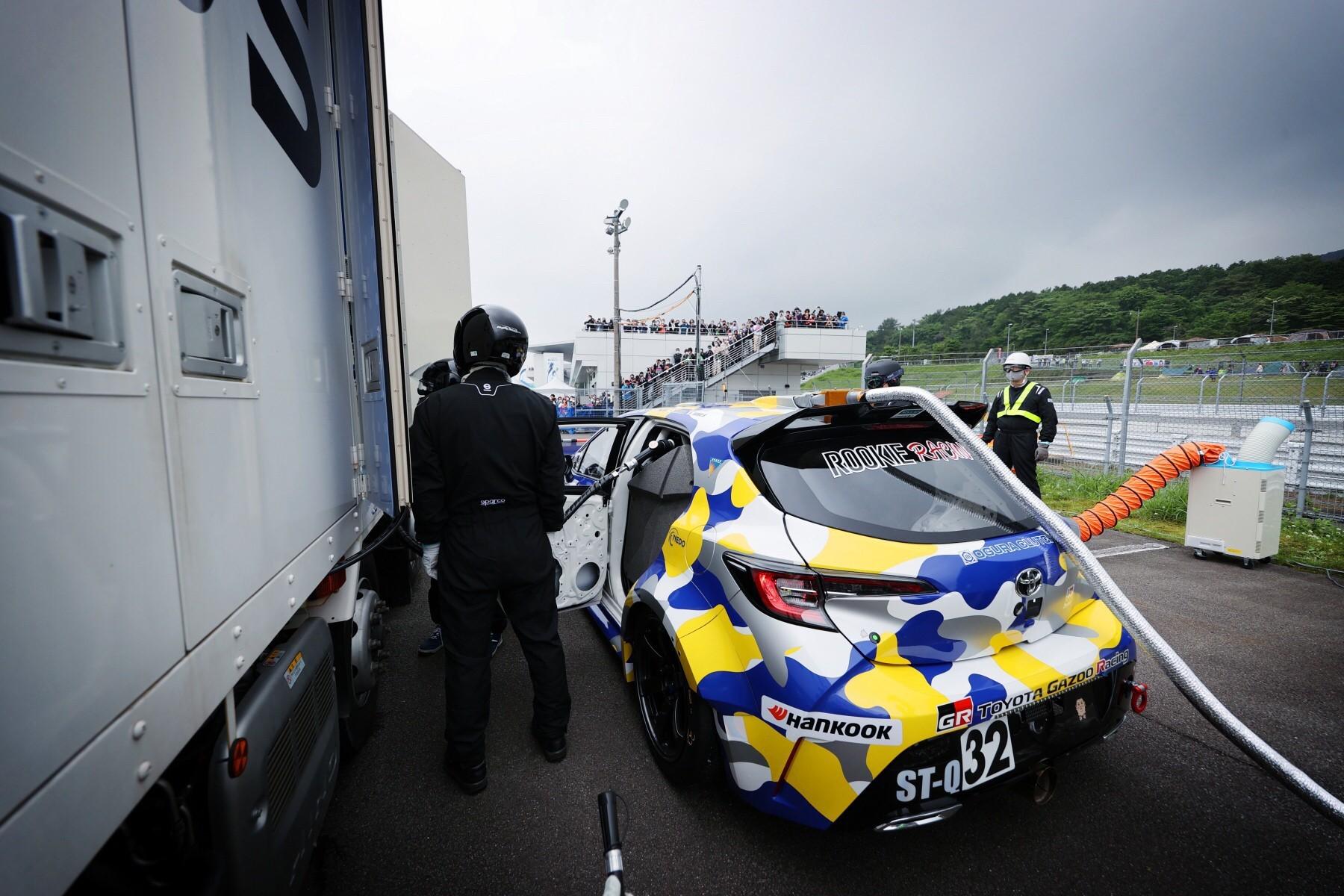
[16:10]
Kamui passes the driver’s seat over to Morizo (Akio Toyoda).
“I want to compete as a driver to demonstrate that hydrogen is safe.”
Morizo embarks on a new challenge by jumping behind the wheel.

[16:15]
Morizo returns to the pits after one lap out on the track. The instruction was radioed out after sensors detected a hydrogen leak in the engine bay. With the car back in the pits, the mechanics begin searching for the cause.

A pipe for extracting the combustible gases that leak from tiny gaps in the engine had become disconnected-that was the cause.
The sensors had caught these traces of hydrogen and triggered the warning signal. With the pipe repaired and thoroughly checked, Morizo heads back out onto the track.
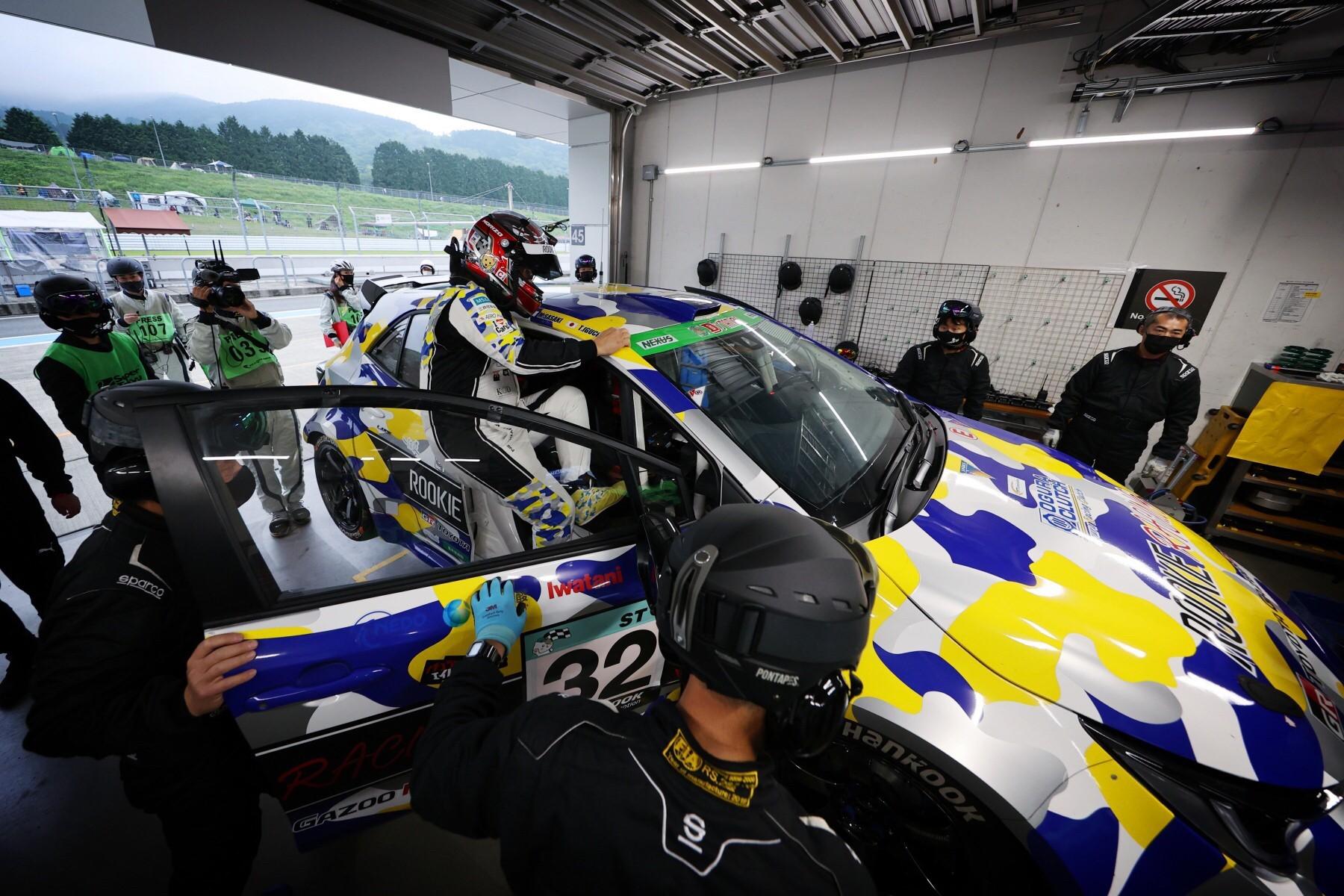
Despite the trouble, the episode demonstrates that the car’s hydrogen detection sensors are working with high precision.
[17:56]
At 26 laps, after around an hour of driving, Morizo hands the reins over to Masahiro Sasaki.
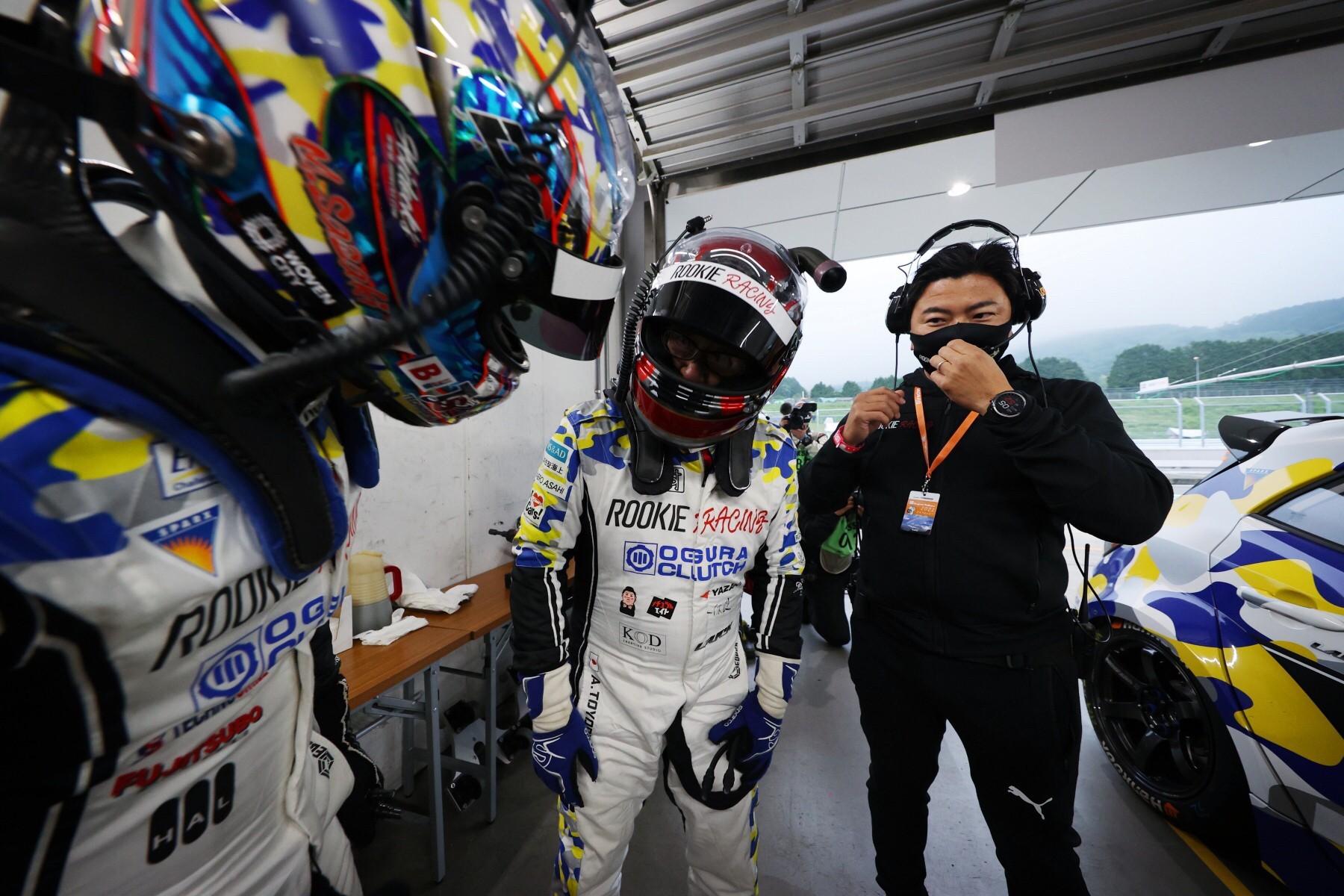
[18:12]
However, the car is back in the pits just four laps later due to increased engine pressure. Mechanics replace the injectors and all other parts that might have an impact.
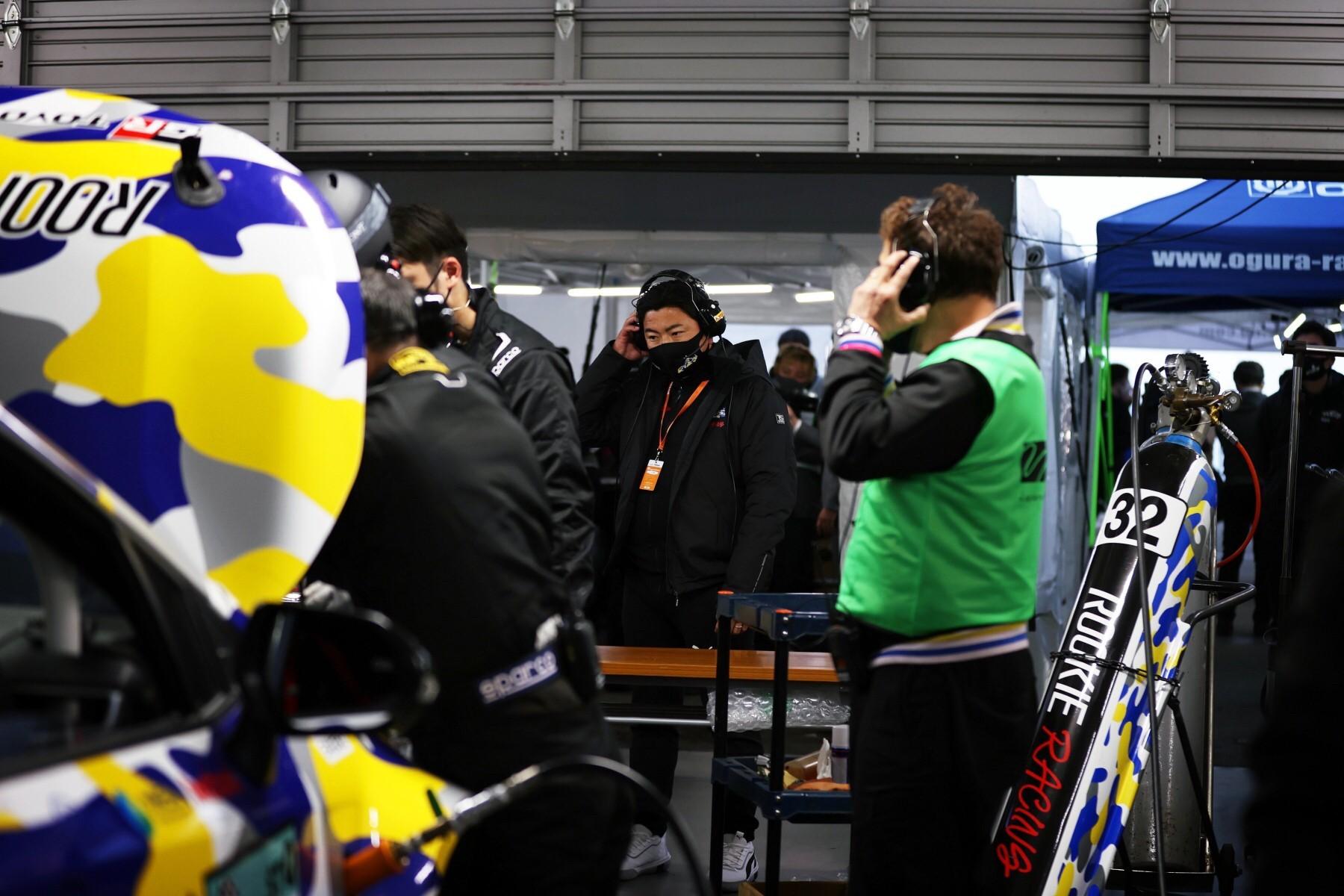
[19:36]
After around an hour and a half of repairs, the engine is restarted. Sasaki climbs on board and returns to the track.

[21:15]
Six hours into the race, Sasaki hands over to the fourth driver, Takuto Iguchi. Moments earlier, Morizo had dropped by to wander through the pits, offering encouragement to the mechanics and engineers.
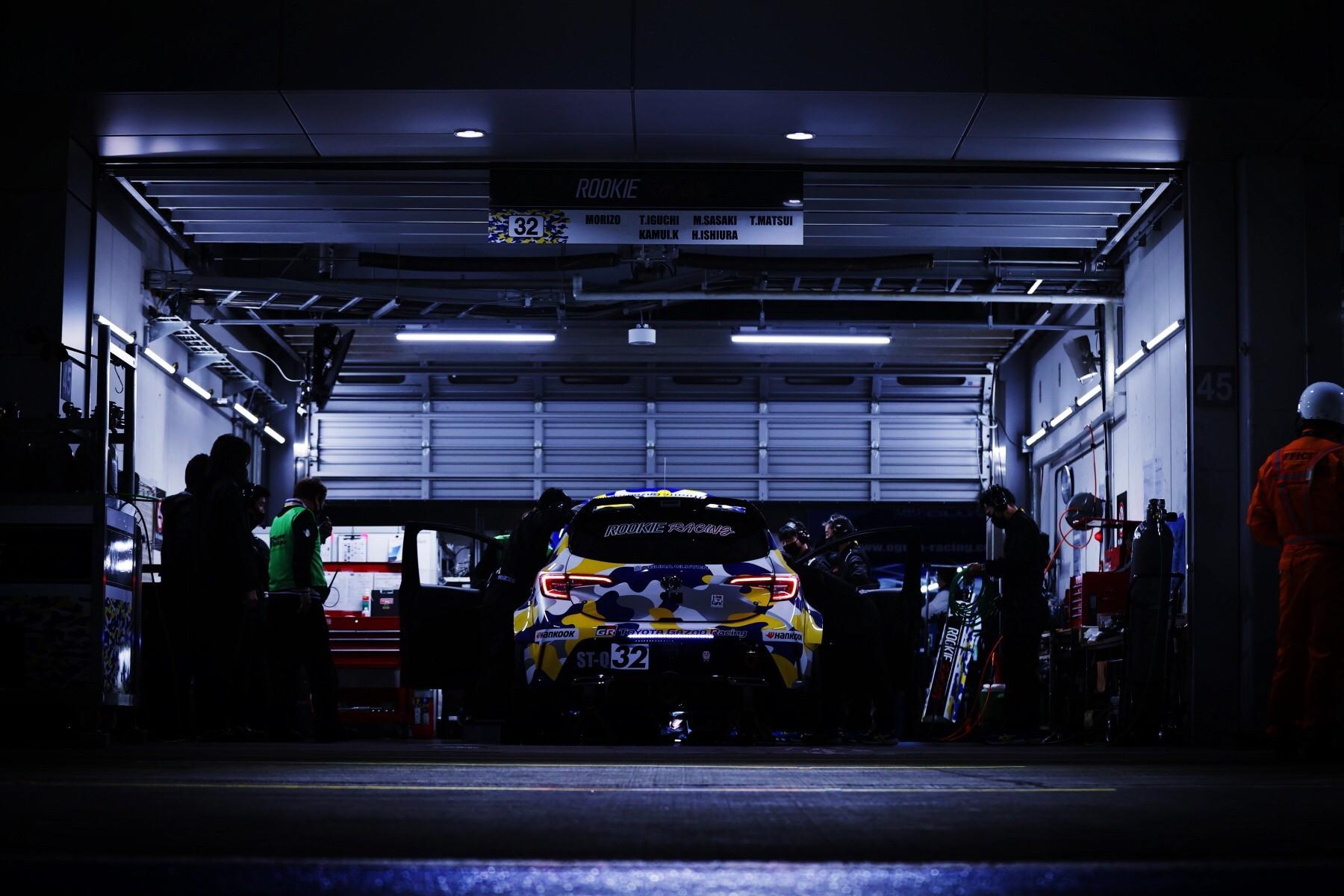
[22:49]
Eight hours into the race, Iguchi hands over to the fifth driver, Takamitsu Matsui.
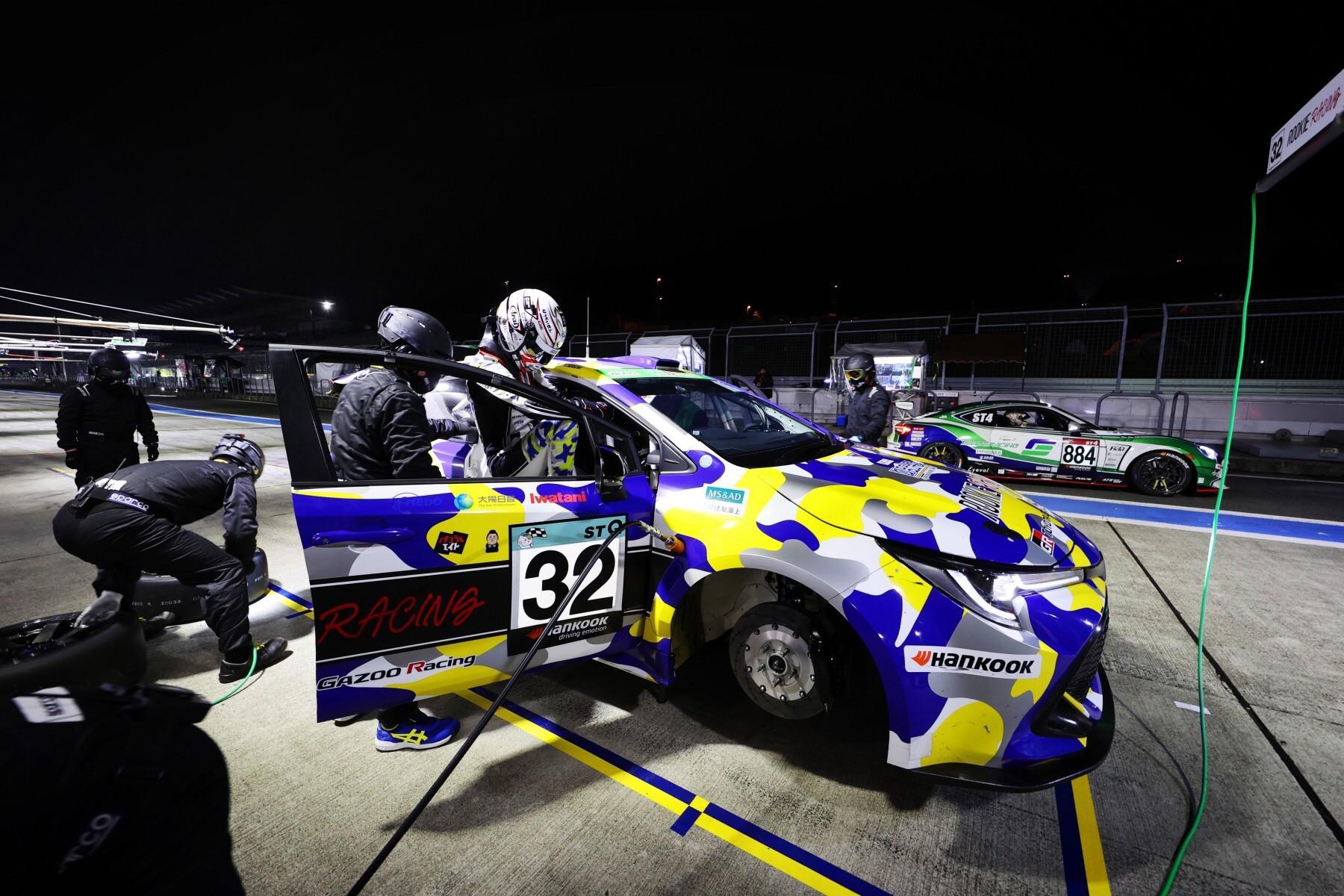
After the driver change, the car is refueled with hydrogen before rejoining the race.

Iguchi tells us the car is running well.
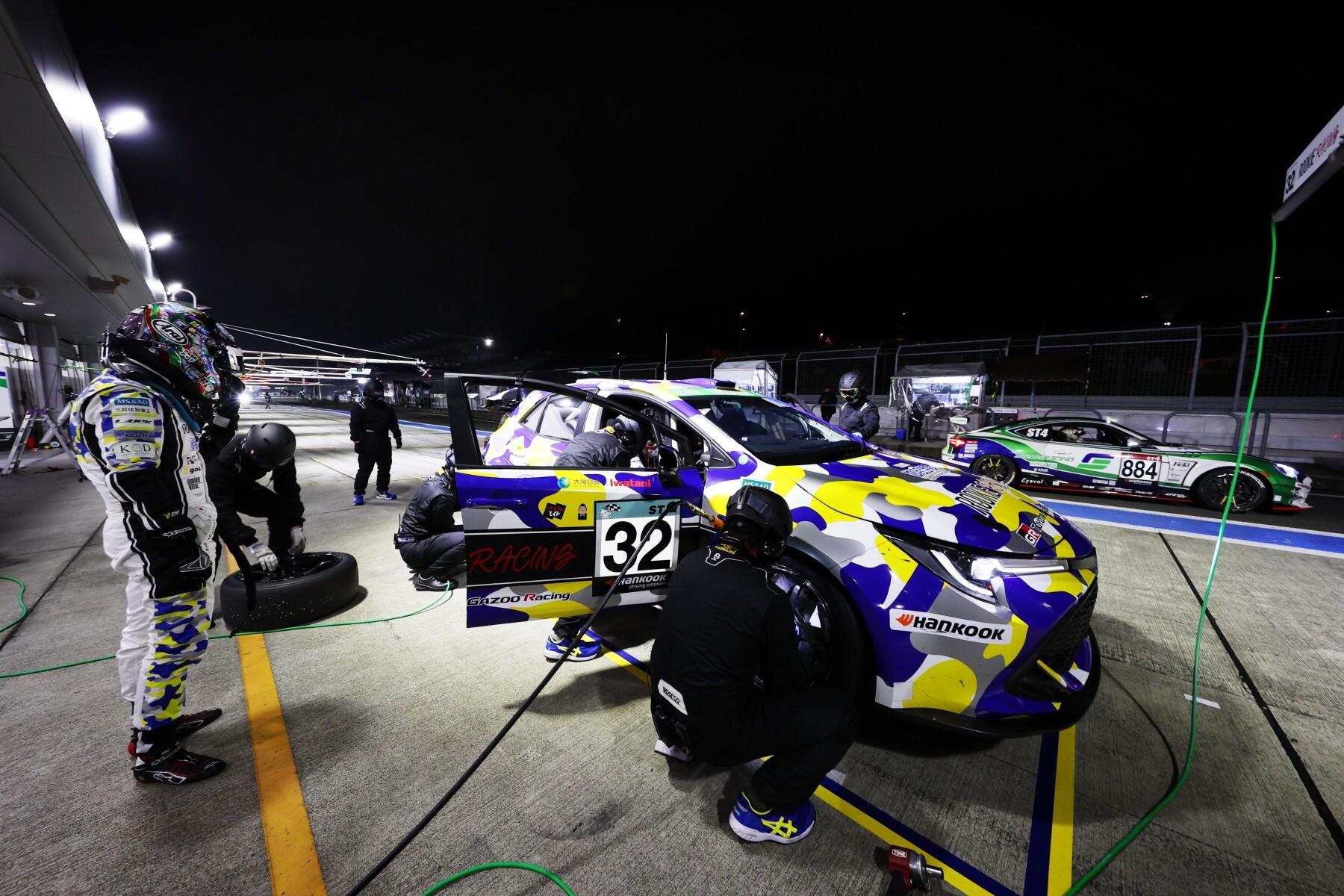
[23:15]
Just when the day seemed likely to end without any incidents, an electrical system issue forces an emergency pit stop.

With Kamui and Matsui joining the engineers and mechanics, the entire team works desperately on repairs. Despite their efforts, the task of getting the car back onto the course drags into the new day.

[1:30]
Morizo rushes over to the pits, where repairs are still underway. With the team hard at work, he brings smiles to many faces by spreading magic words.
And what exactly are the magic words?
At the meeting conducted earlier, Akio gave the following message to the “24H” members.
“There will be long hours until the race finishes on Sunday. We are one team united beyond what we each belong to, and I think there are magic words that unite us further. In the morning, let’s say ‘Good morning!’, and if you have worked more than four hours, please say back ‘Good afternoon!’, for those who have worked more than eight hours, please say ‘Good evening!’ This allows us to understand who have worked for how long, and through these unique greetings, we can feel more united and truly see each other ‘colleague.’”
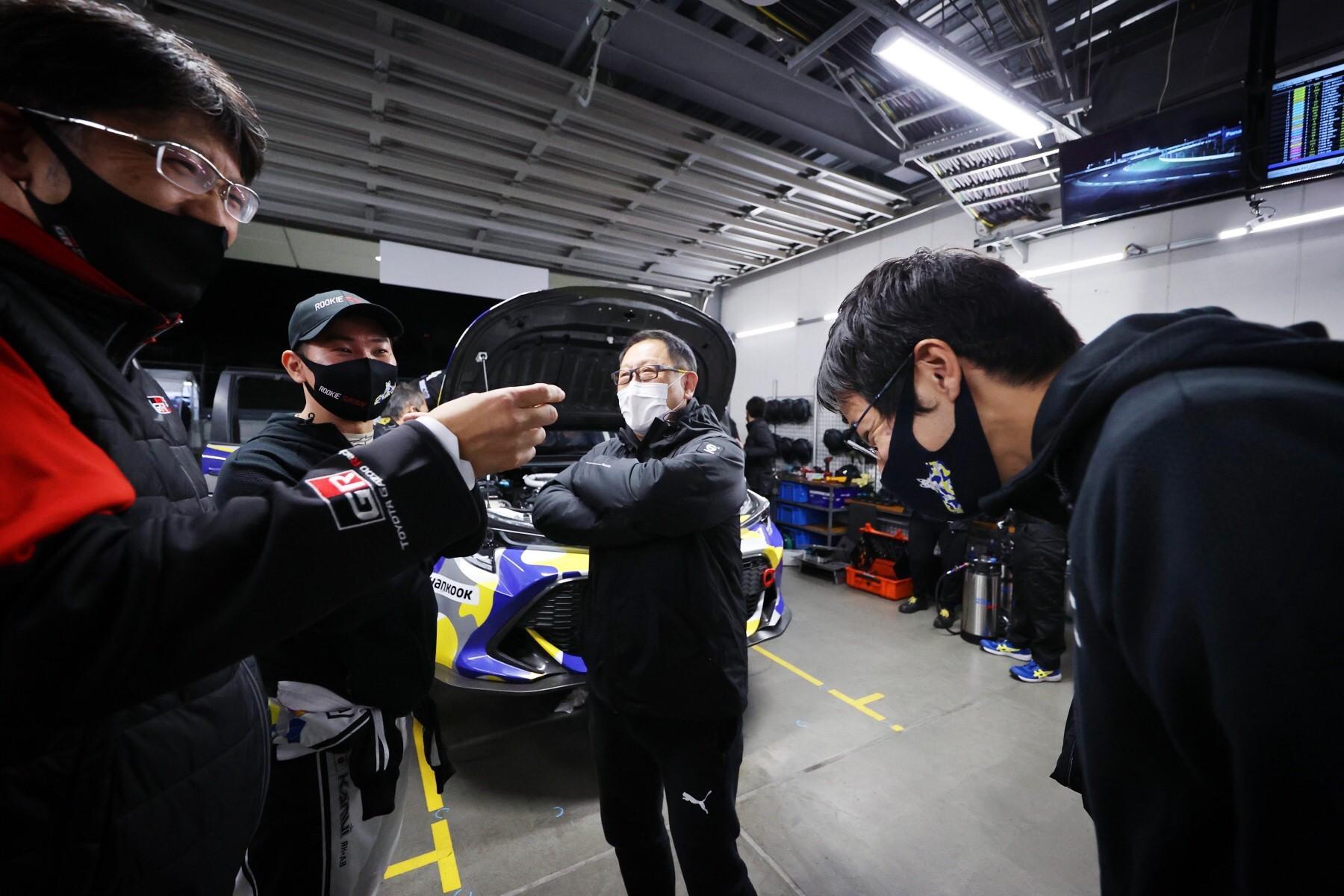
[3:30]
After four hours of work and with the race half-done, at 3:30 a.m. the engine is restarted at last.

Matsui jumps back on board and finally rejoins the race.

[4:32]
Around 4:30 a.m. the new day begins to dawn, and Hiroaki Ishiura takes over driving duties from Matsui. Having been assigned to the ‘night shift’ in past years, Ishiura can thank the long hours of repair work for his chance to race at dawn.
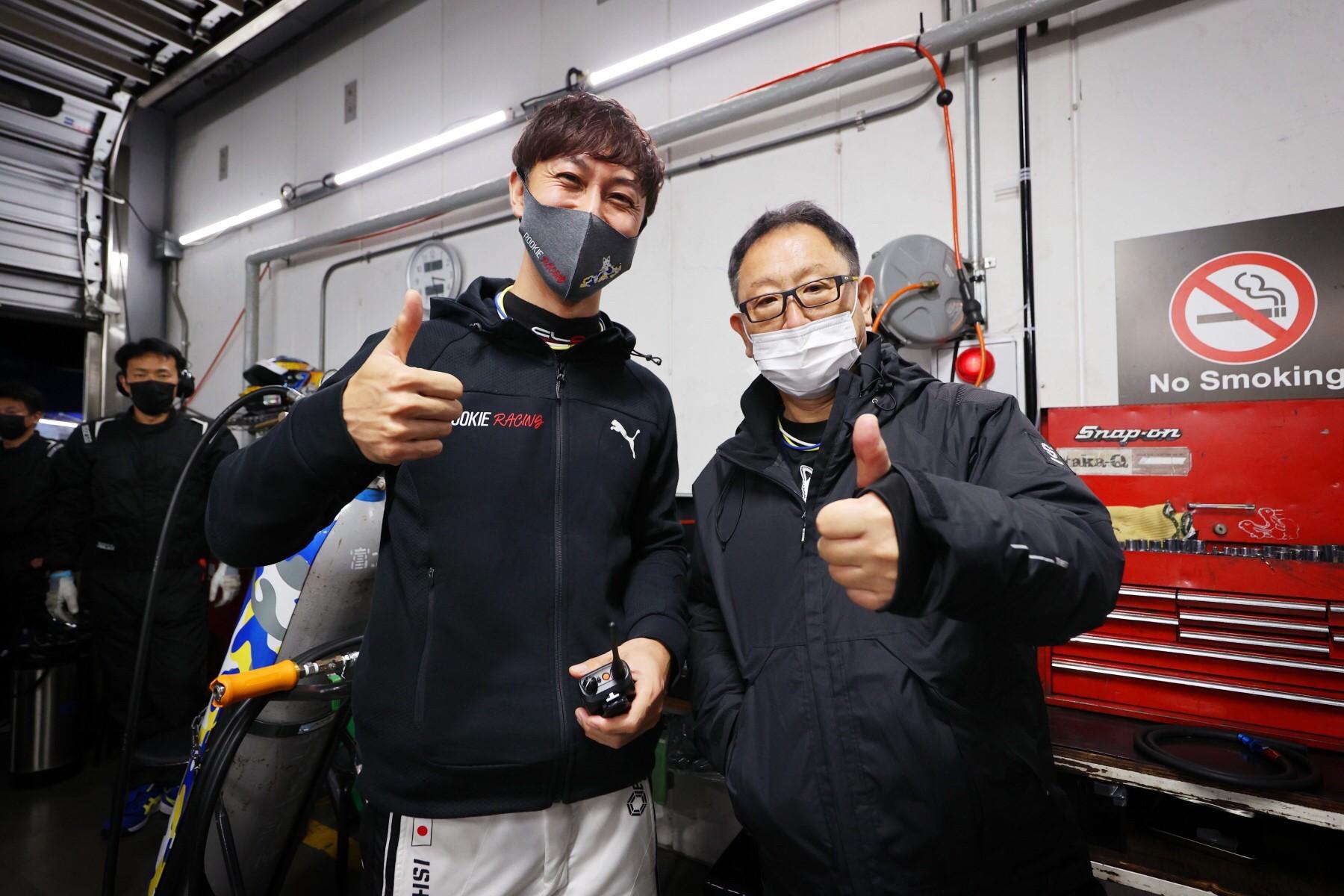
With the hydrogen refueled, Ishiura sets off to drive the ‘sunlit road’.
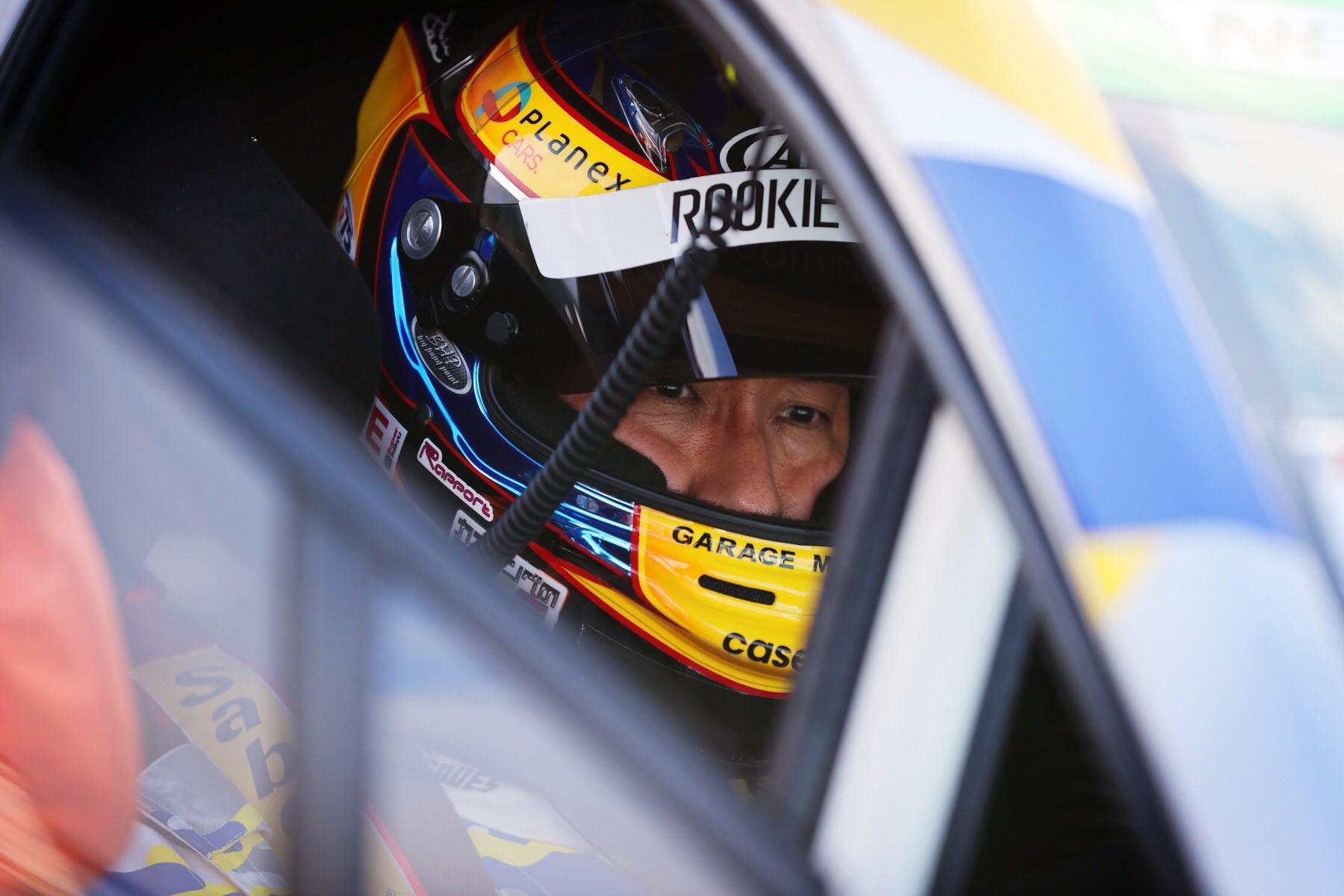
Ishiura remains behind the wheel for the next two hours.
“I had a great time driving. We need to take care of the transmission,” says Ishiura at the end of his run.
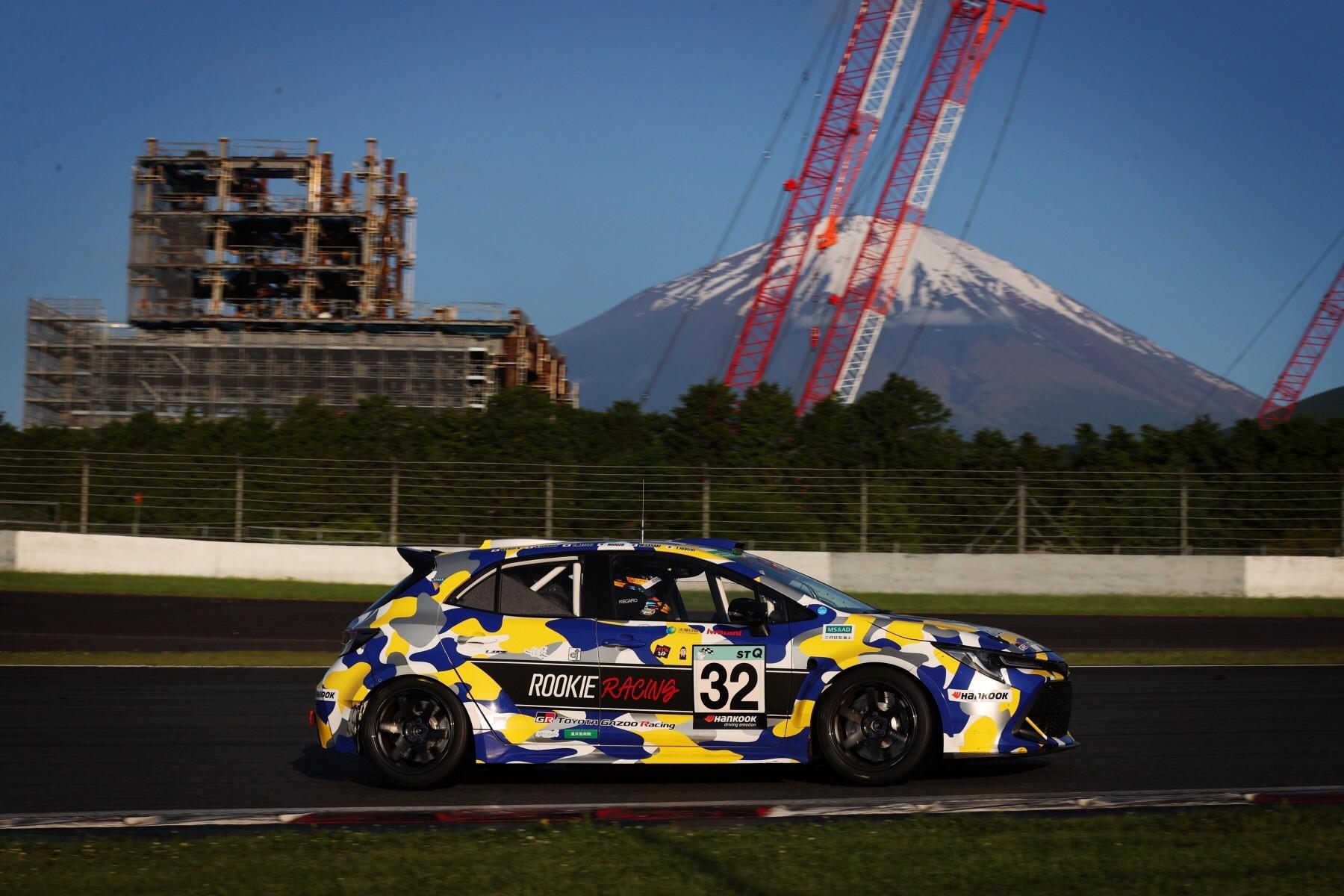
[6:35]
After two hours of smooth sailing, Ishiura passes the baton to Kamui, marking a full rotation through all six drivers.
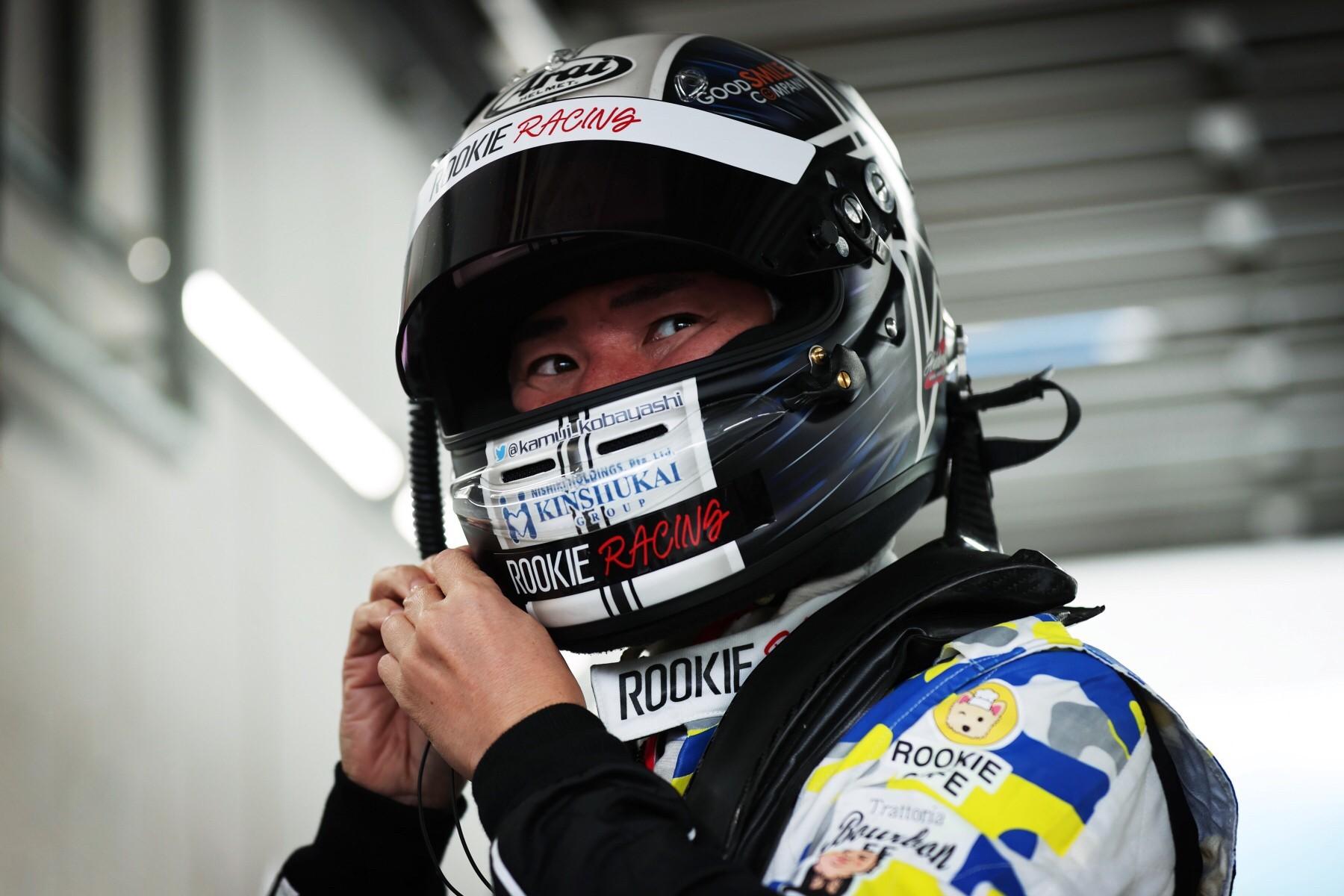
“The car drives really well,” comments Kamui during refueling.

[8:11]
Seventeen hours into the race, the car passes the 1,000km mark in total distance traveled.
Despite problems with the rearview monitor (used in place of a mirror), the car itself continues to run smoothly.
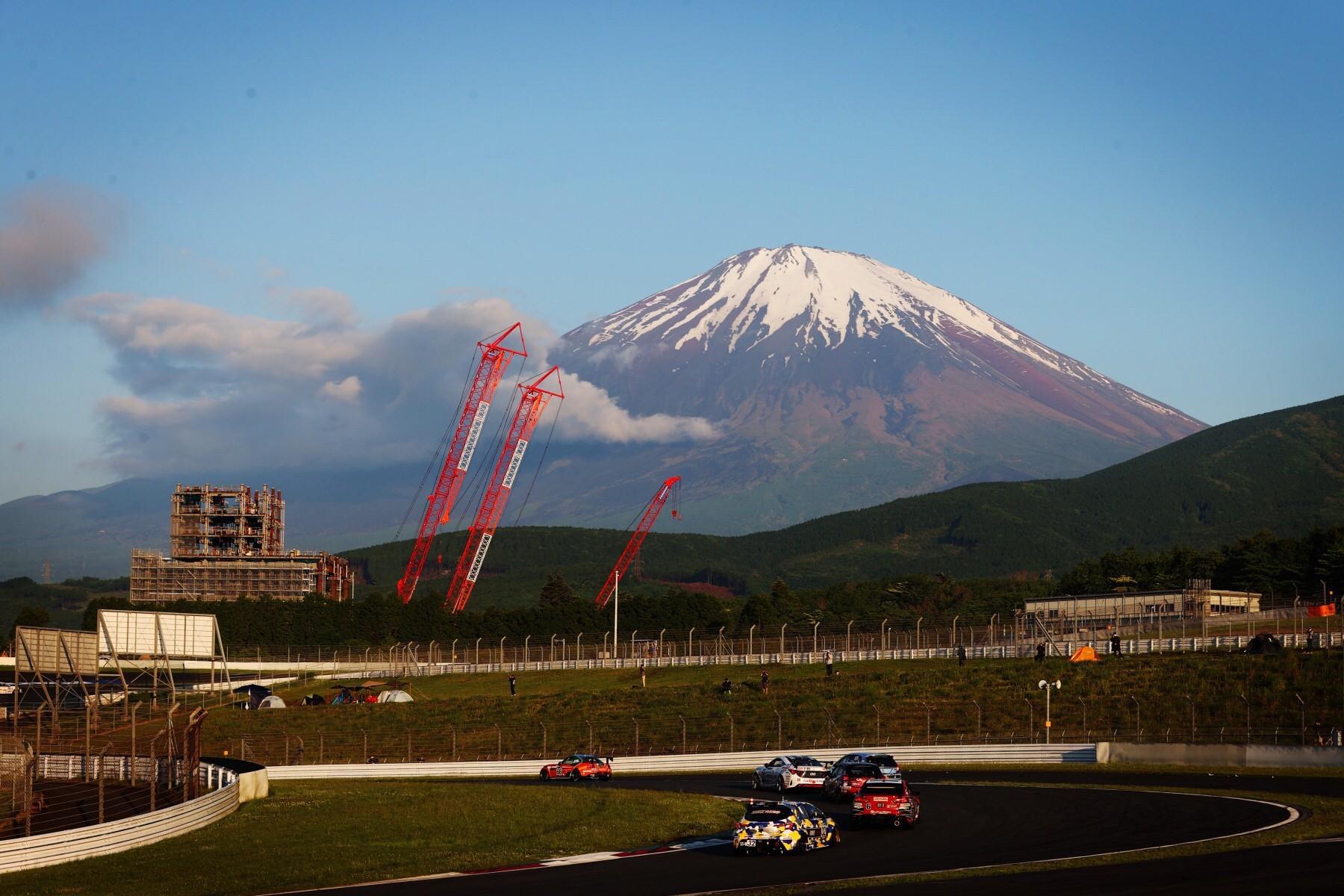
[8:25]
Seventeen and a half hours into the race, Morizo departs for his second run.
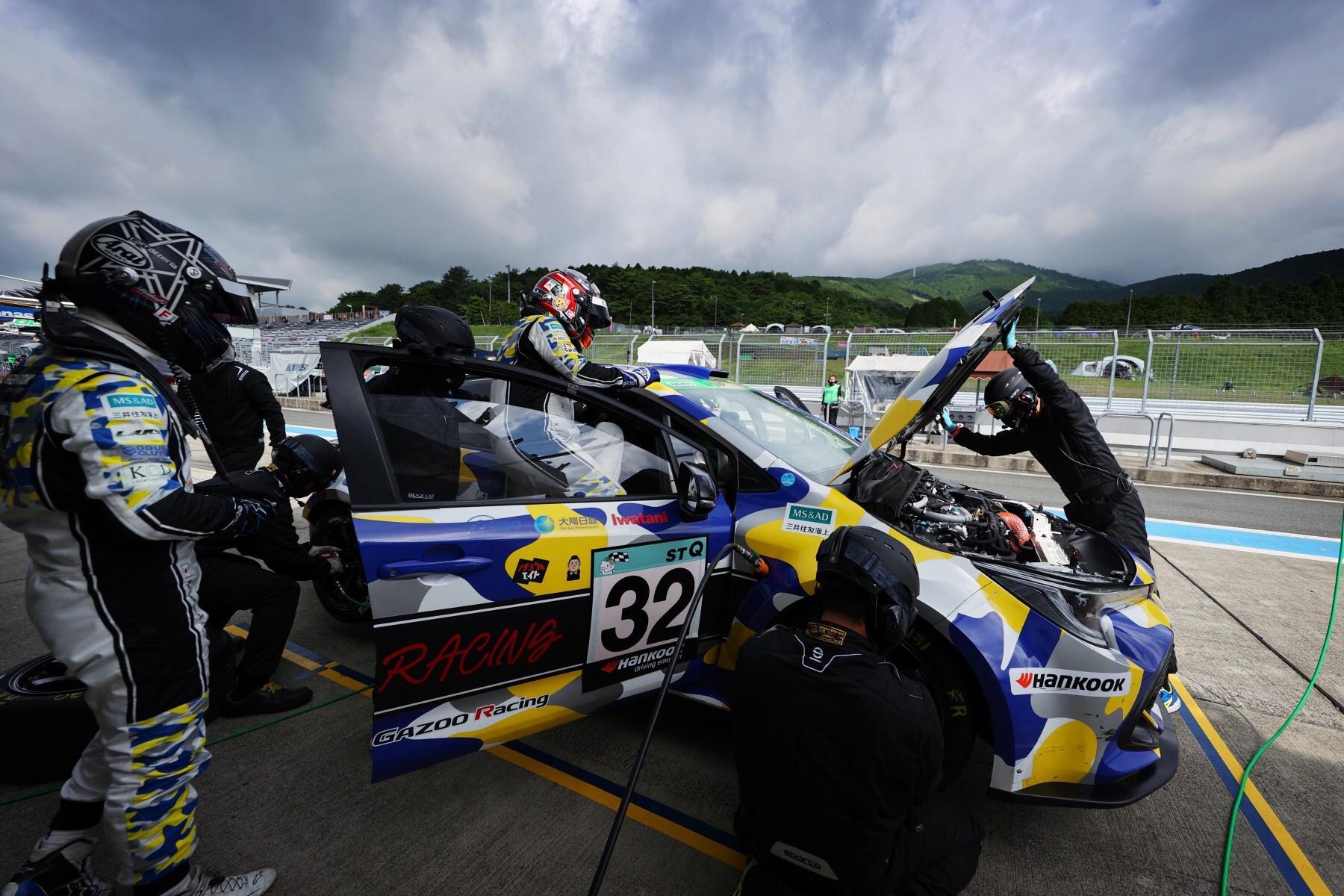
[9:30]
After an hour on the track, Morizo trades places with Iguchi.

[10:00]
Having worked round the clock, the mechanics’ exhaustion reached their peak…
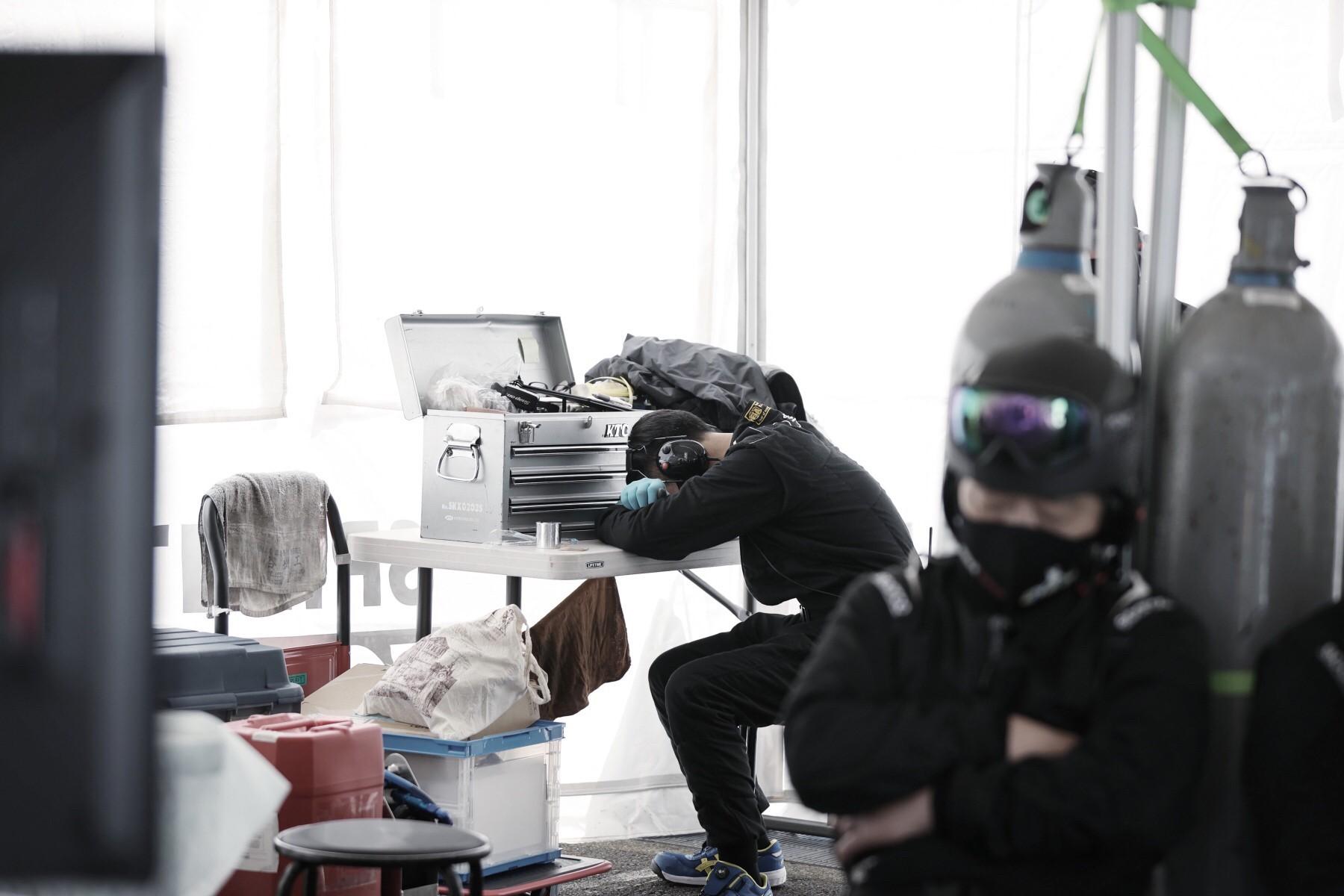
[10:40]
From Iguchi to Sasaki. With four hours left, the race enters the final stages.

[11:30]
Sasaki hands over to Matsui, whose run lasts nearly two hours. With just under two hours to go, the team’s distance breaks the 1,500km mark.
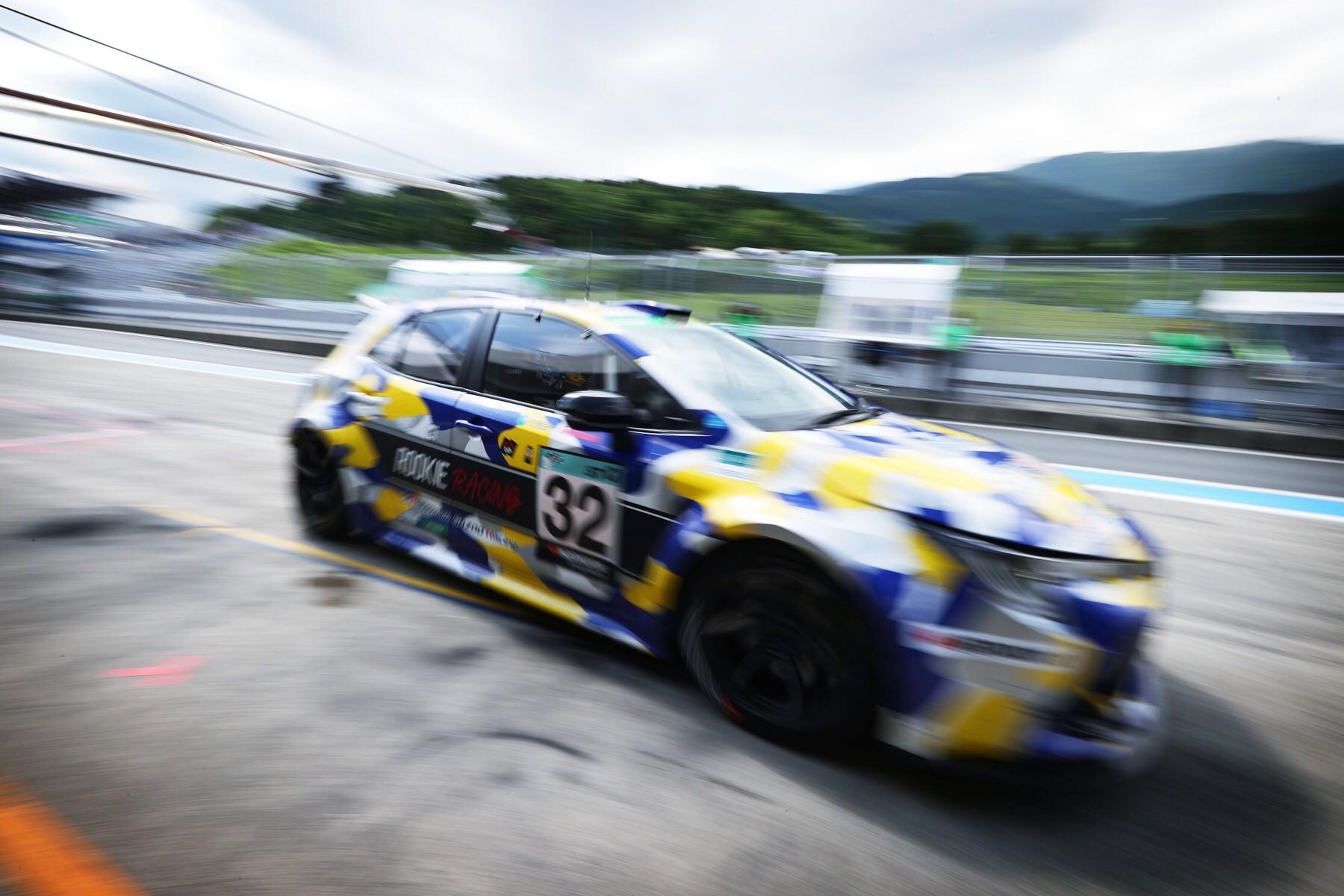
[13:30]
One and a half hours remaining. Ishiura takes over once more from Matsui. Ishiura is determined to drive safely and link up with Morizo as the final driver.

The plan was to spend an hour on the track before handing the baton over to Morizo for the last leg…
[14:00]
With one hour to go, driving stability deteriorates due to steering irregularities, forcing Ishiura to make an emergency pit stop. The crew identifies a missing nut on the right rear absorber.

While the pits lack a spare replacement part, one of the mechanics recalls that the same part is used in the GR Yaris.
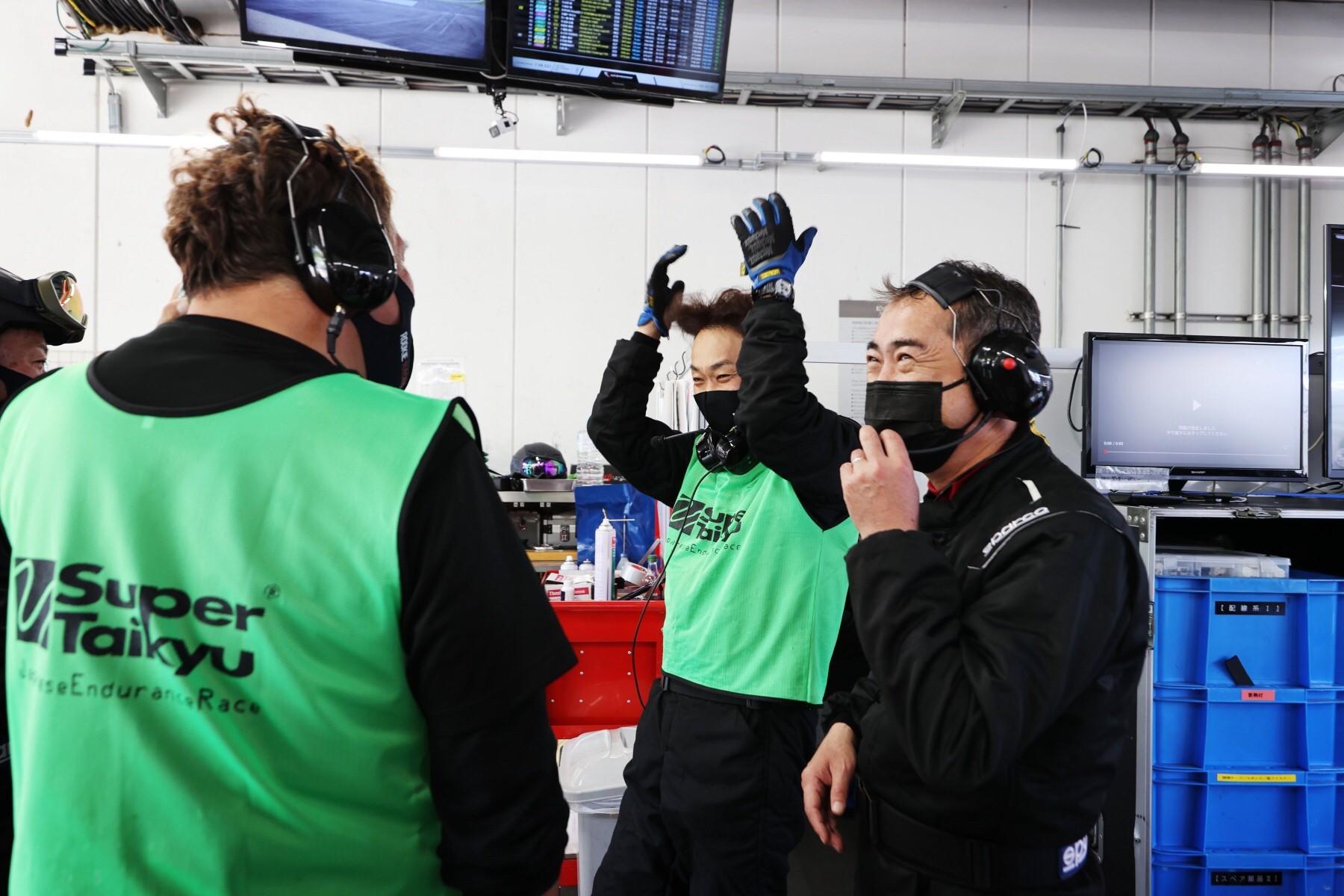
The order is given to quickly remove and borrow the part from a team member’s GR Yaris that happens to be parked behind the pits.
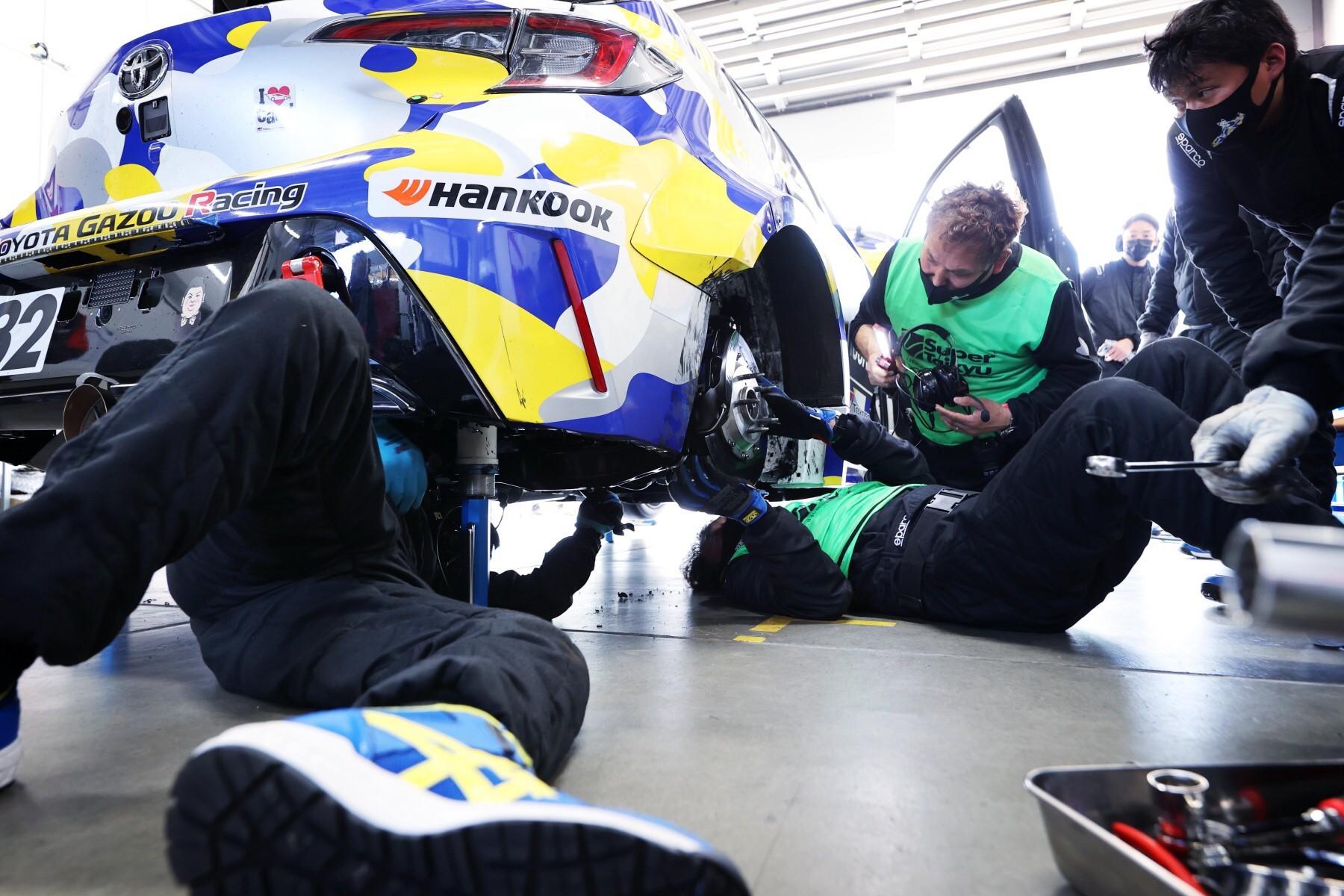
The mechanics continue their repair work as the entire team watches on, praying for a return to the track. Just 45 minutes remain in the 24-hour race. Part replacement complete, the car gets the go-ahead!
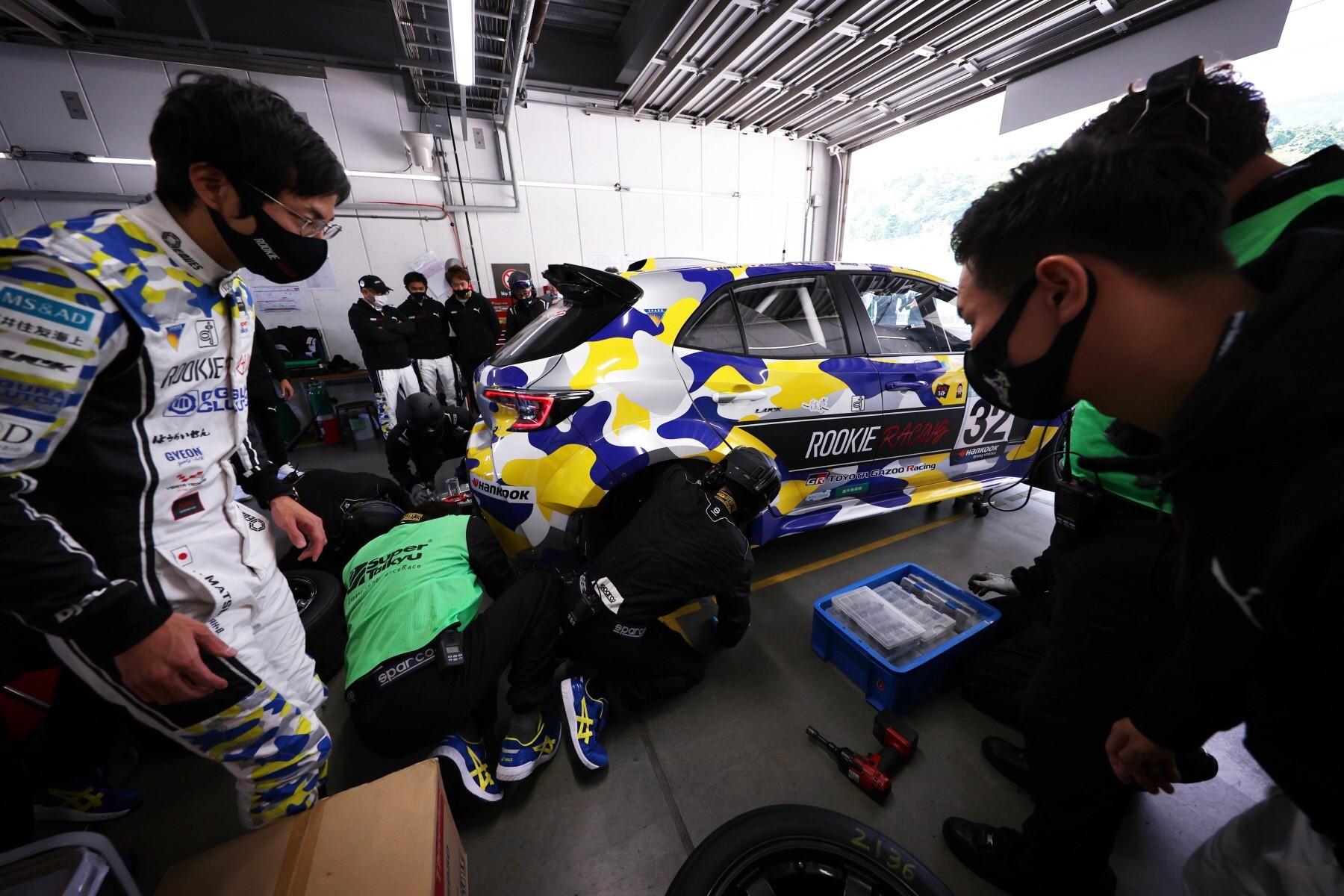
[14:27]
At long last, the baton is passed to Morizo for the final leg.
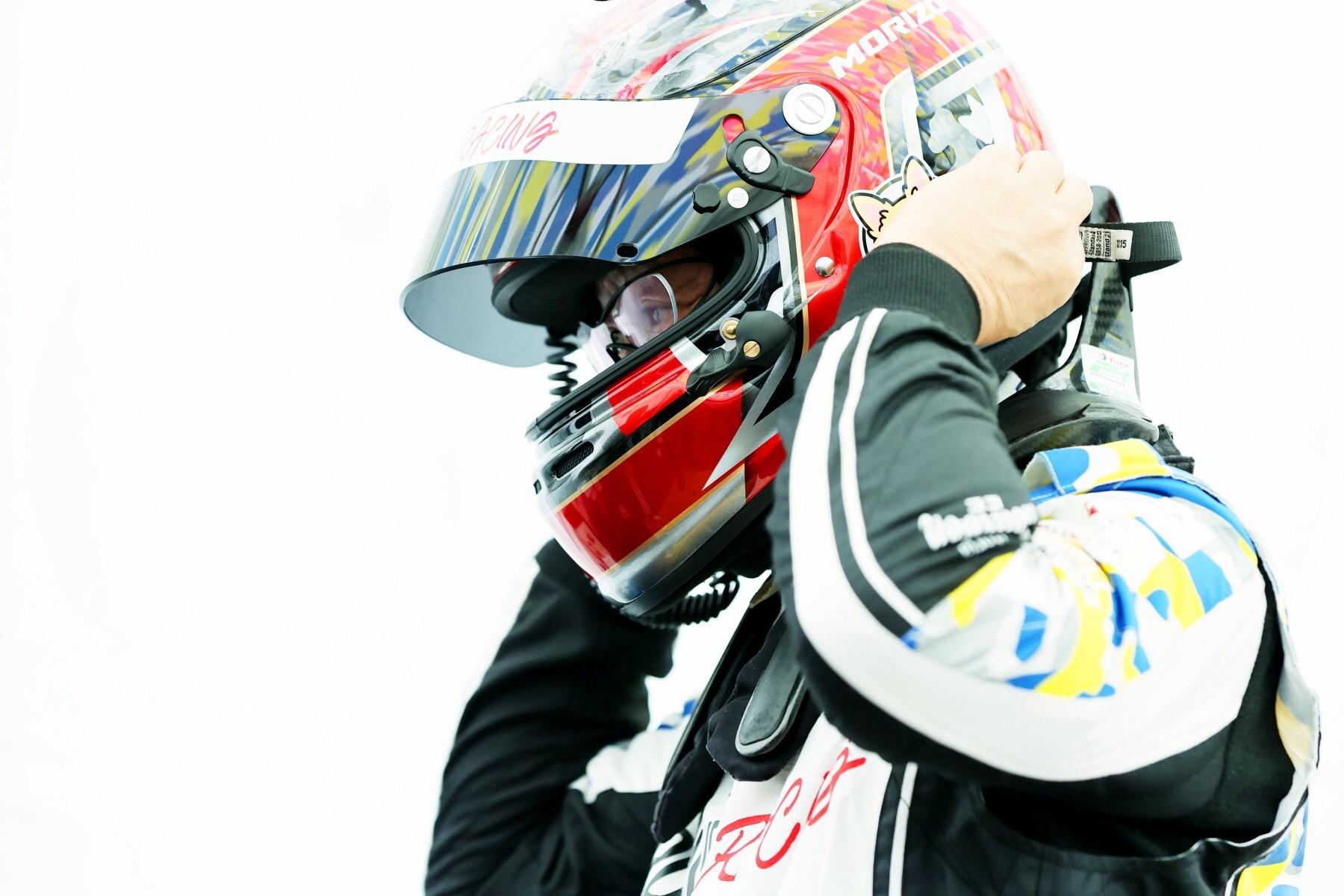
After a final check with the team manager and chief mechanic, Morizo climbs into the Corolla.

Thirty minutes left. Morizo steers the car back out onto the track. All that’s left to do is pray that he can safely go the distance.
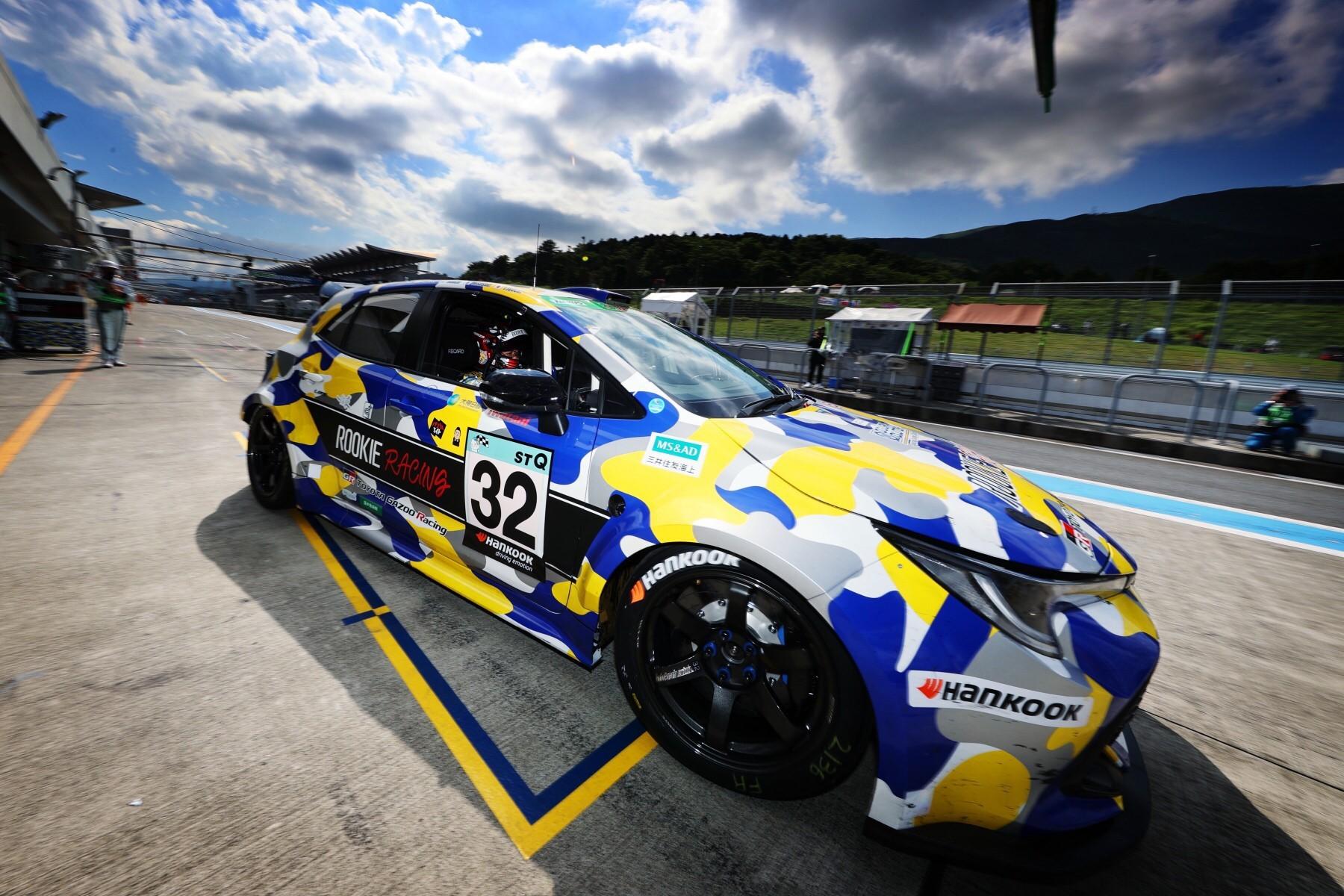
[15:00]
Finally, the clock reached 3:00 p.m. on May 23, 2021. The #32 hydrogen-powered Corolla passes the checkered flag alongside the #28 GR Supra.
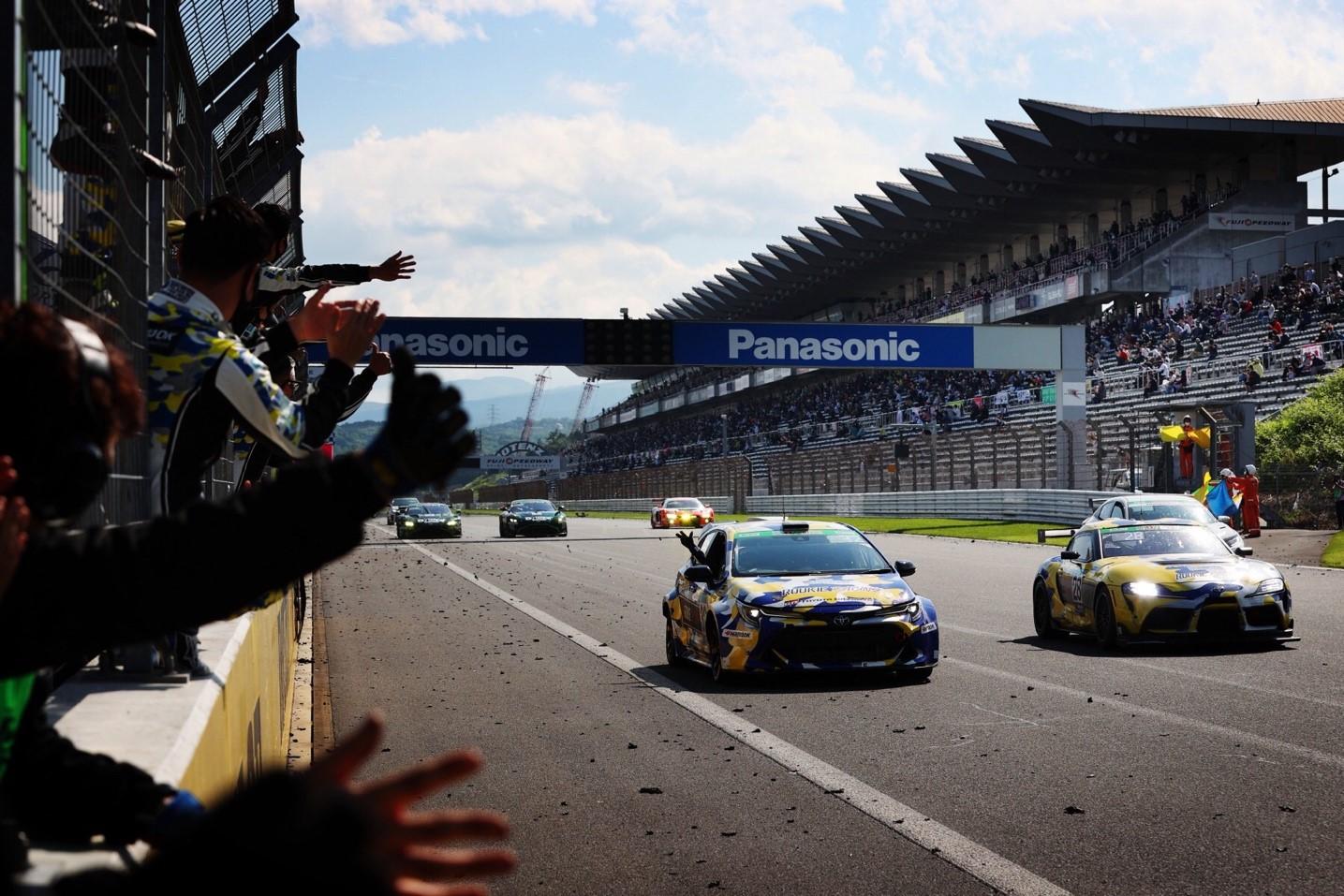
The team celebrates completing the race.
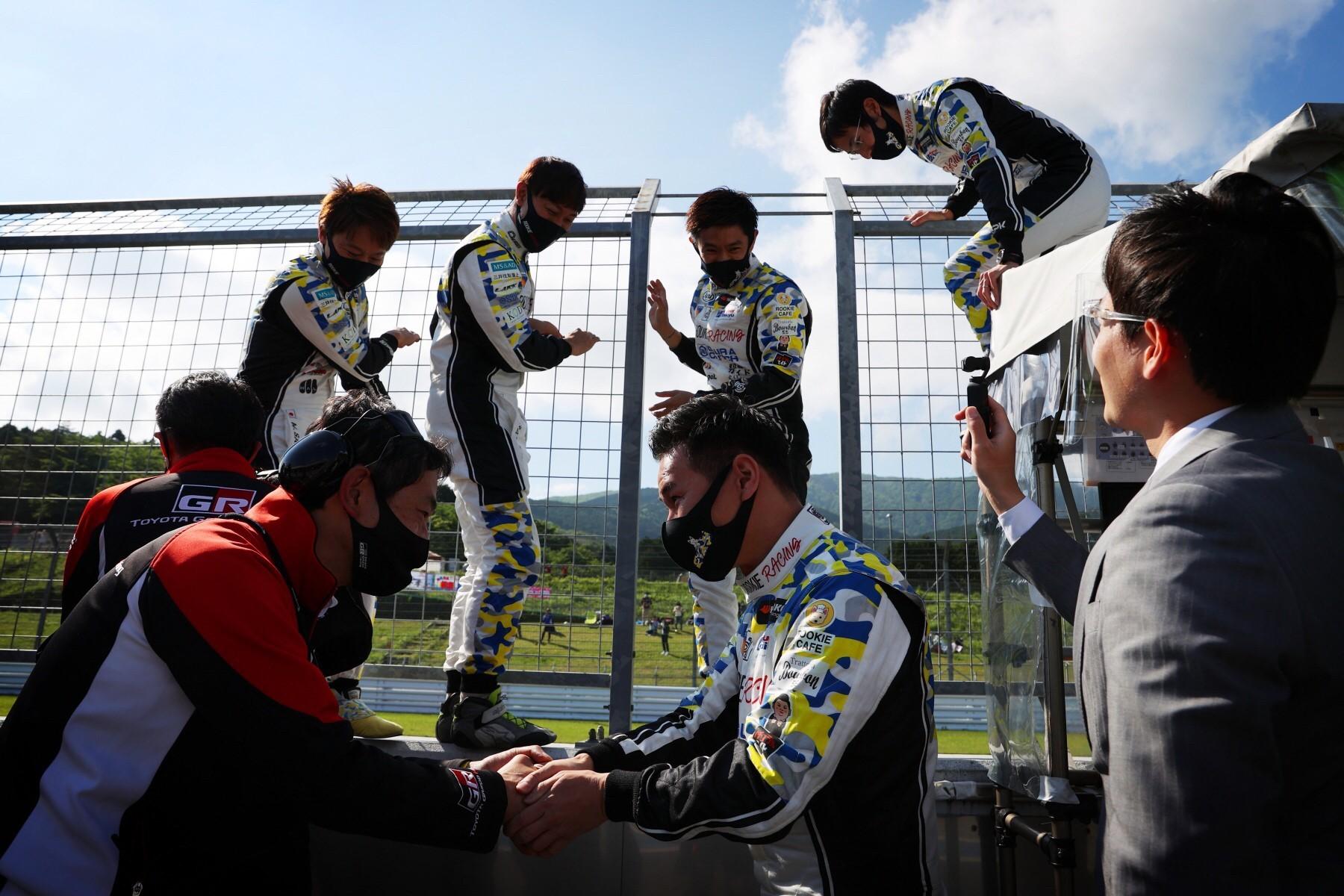
Team members give the cars a joyous welcome upon their return to the pit lane.
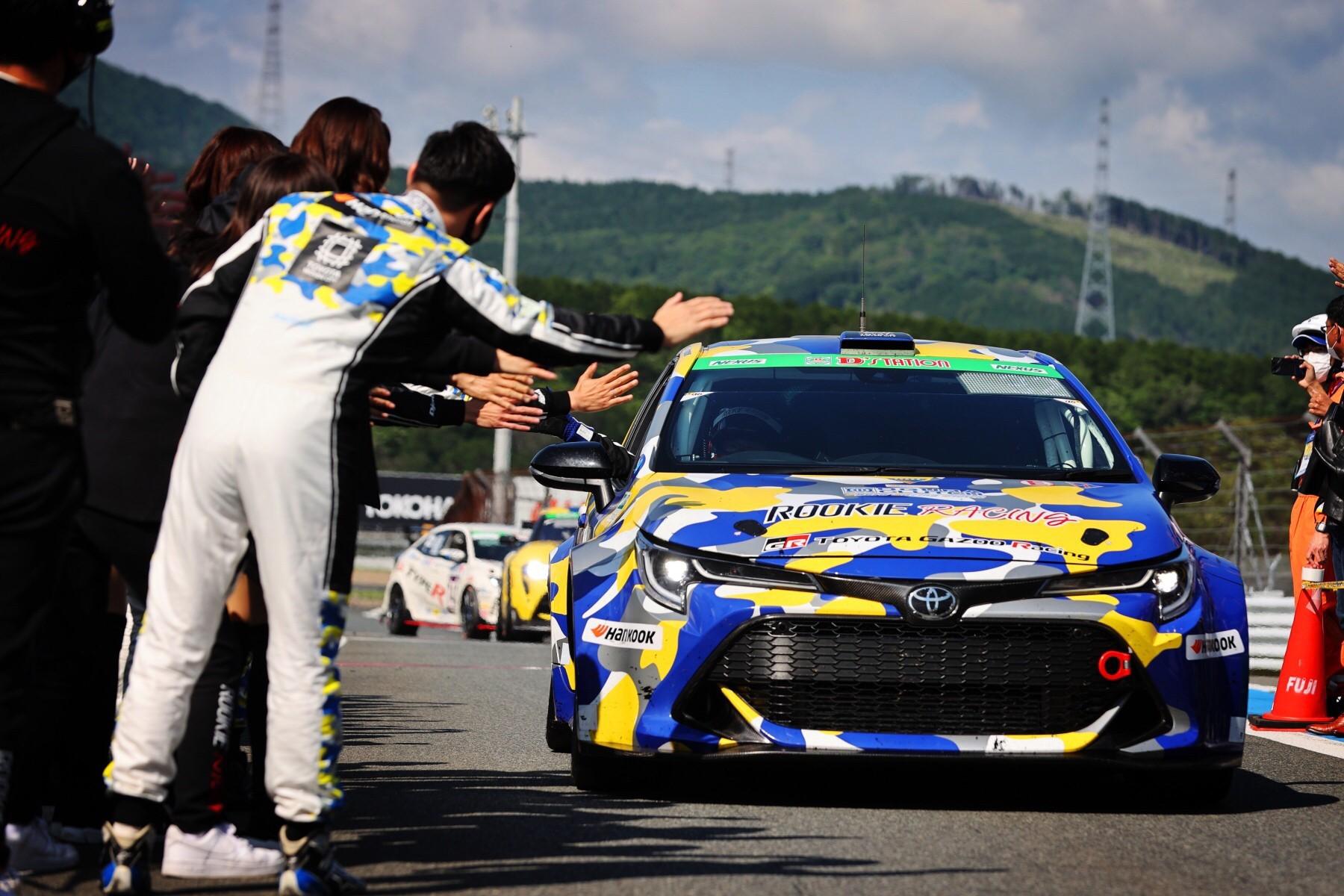
[Results]
- Distance driven: 1,634km (358 laps)
- Driving time: 11 hours 54 minutes
- Pitting time: 12 hours 6 minutes (Repair/checks: 8h 1m, Hydrogen refueling: 4h 5m)
- Number of times refueled: 35
In the challenge of a hydrogen-powered car, the team overcame many problems to successfully complete the 24-hour event.
The entire team, including drivers, mechanics, engineers, and refueling crew, gathers in the pits 30 minutes after the race.
With a megaphone in hand, Akio Toyoda, a.k.a Morizo, addresses the “24H team”, sharing his thoughts on completing the 24-hour race.
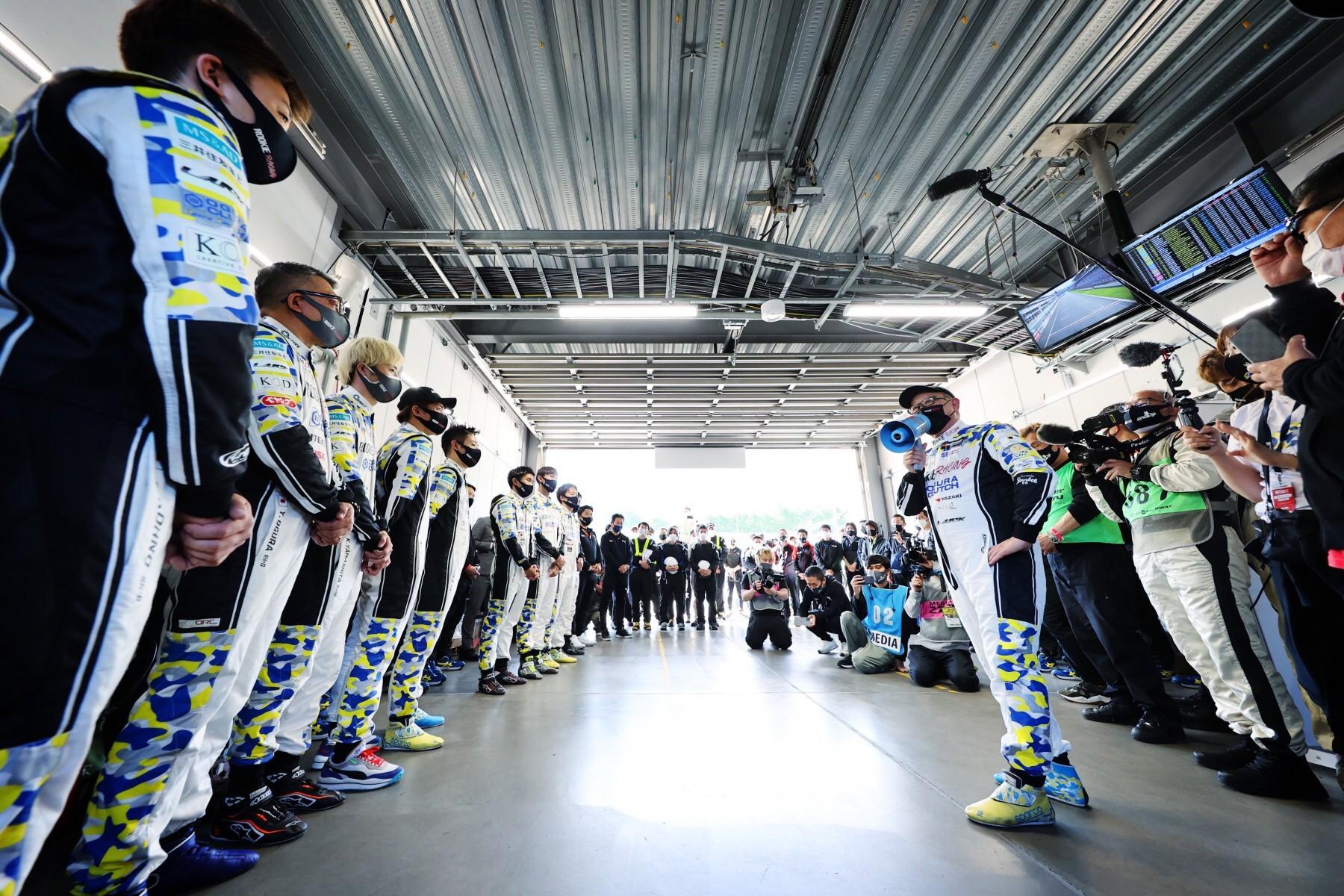
Akio: Good morning everyone!
All: Good evening!
Akio: That’s right (laughs)
As everyone responded to him using the “magic words”, Akio was able to confirm that the members there were the colleagues who took on the challenge together. He again shared his thoughts on what the challenge was for.
Akio:
In 24 hours we covered a distance of over 1,500km, equal to two round trips between Tokyo and Osaka.
Had we been unable to get the car race-ready in time, the problems we faced in these 24 hours would not have happened.
That means we wouldn’t have even started the process of ‘making ever-better cars’ through motorsports.
All of us have come here today as representatives of the 5.5 million people (in Japan’s automotive industry), working together across company lines to expand the path for future carbon neutrality through the use of hydrogen-powered engines.
I believe that a carbon-neutral future will not be created through regulation or goals, but rather purposeful passion and action.
Before the many people who participated and watched this Super Taikyu 24-hour endurance race, all of you have demonstrated what such "action" looks like.
Thank you for coming together with a shared spirit, bidding each other, “Good morning,” regardless of our different companies and positions.
Our journey to the future has only just begun. I’m sure that not only those 5.5 million people, but also many others in Japan and overseas, were moved by seeing the hydrogen-powered engine compete the race, along with all of your efforts here today.
I promise to continue taking such action, as a sign of my gratitude to all of you.
Thank you so much for your hard work today! Thank you!
Make sure you get a good sleep!!
With this promise, the challenge of the 24-hour race was finished.
Engineers had worked with purposeful passion for four months in an effort to get the hydrogen-powered Corolla race-ready in time. Hearing Akio’s promise, one of the engineers responded with a look of delight: “We’re finally at the starting line.”

